Introduction
Aqua Computer Airplex Radical 2 Copper Radiator Review
The intention of this write up is to provide information and performance data about the Aqua Computer Radical2 Copper 360mm Radiator for inclusion in the Extreme Rigs Rad Round Up 2015. I’ll be keeping the review section short and factual, focusing on presenting the performance data compiled through the numerous tests carried out. First of all, a big thanks to Aqua Computer for providing this sample of the Radical 2 Copper!

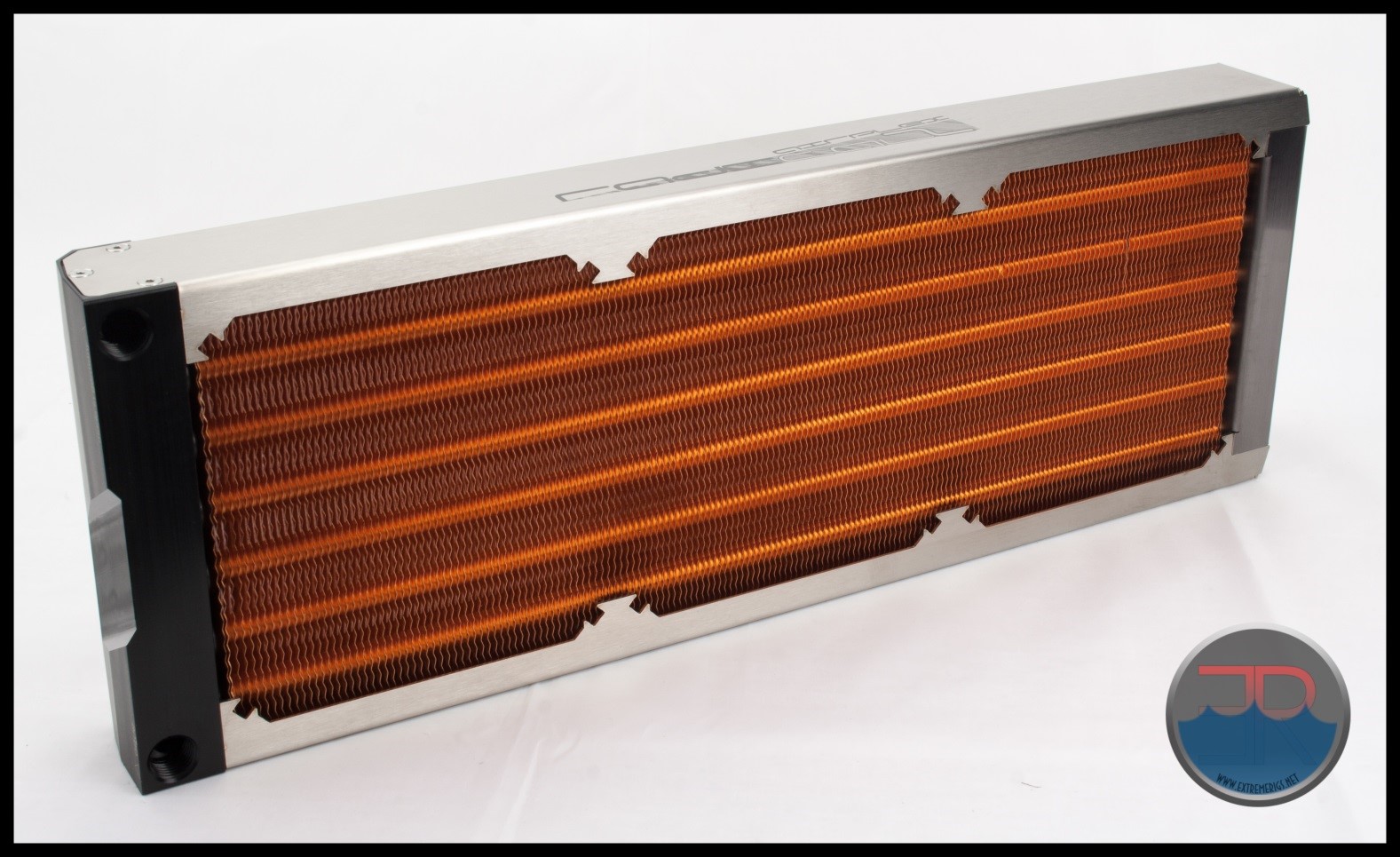
Note: You may notice changes in the data presentation in this radiator review as I’m now also including even more thermal testing data for both Push/Pull and Push Only fan installations.
What’s in the Box?
The Radical 2 sample for scrutinizing came in what I assume is the retail packaging. No outer sleeve, just the protective cardboard box. No issues with this for me.
Opening the box we find a layer of foam sheet offering some added protection to the core during shipping.
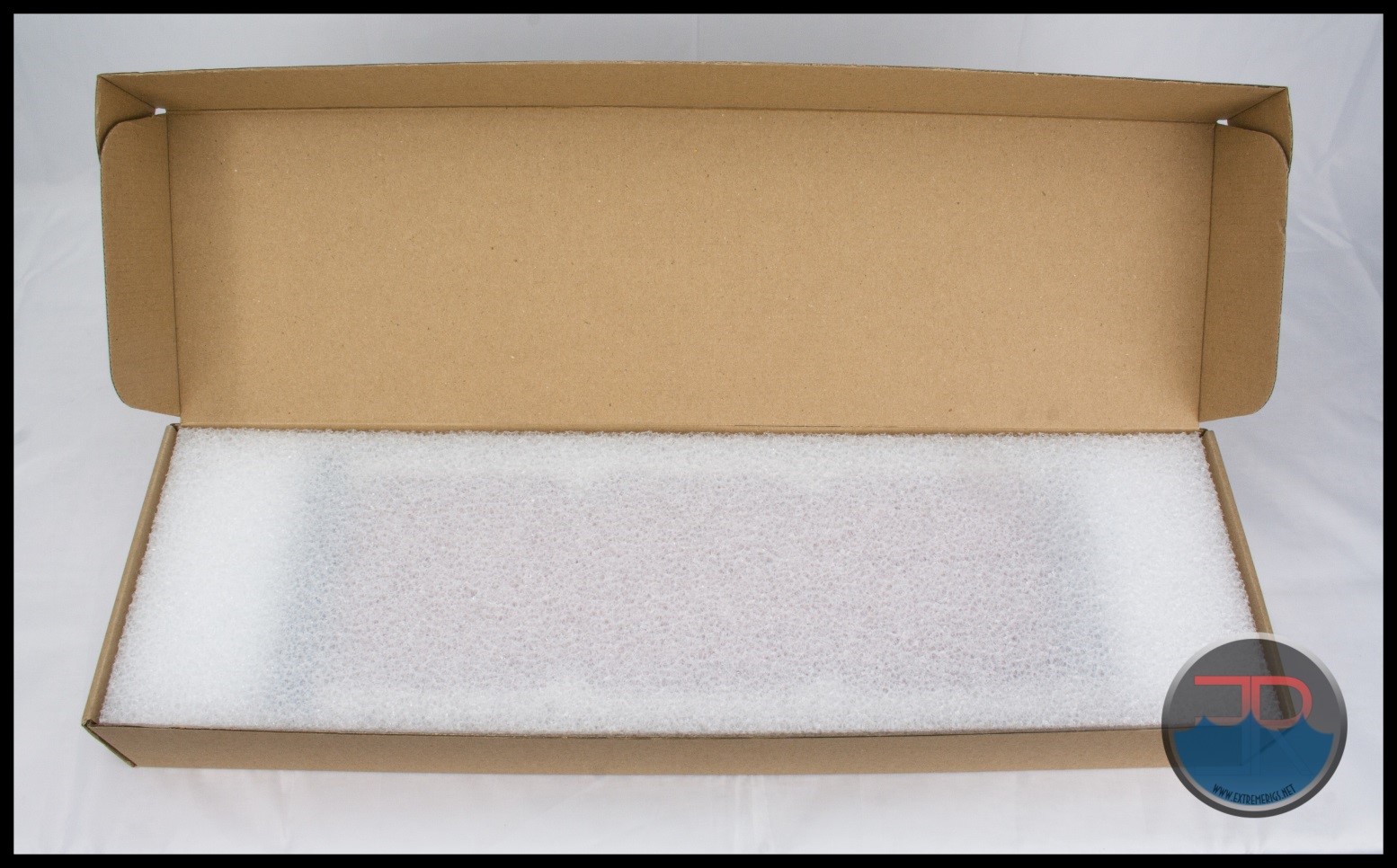 The radiator is housed snugly among more foam pieces, with another foam sheet on the bottom. The mounting hardware is placed at one end. This packaging system is simple yet I believe ticks all the boxes for required protection of the radiator from factory to end user.
The radiator is housed snugly among more foam pieces, with another foam sheet on the bottom. The mounting hardware is placed at one end. This packaging system is simple yet I believe ticks all the boxes for required protection of the radiator from factory to end user.
Extent of delivery:
Aqua Computer states the following is supplied:
One radiator
12 threaded M3 inserts
12 screws M3 x 25mm
Note that only 12 inserts and screws are supplied, enough for Pull or Push fan installation only – NOT Push/Pull which also is part of the test criteria for ER Rad Round Up 2015. Additional sets of inserts and screws are available for purchase if you are planning to run Push/Pull fans. This is at least better than the AMS radiator though which did not include any screws while costing significantly more.
The supplied 25mm screws are “barely” long enough to mount with fans to a bracket or chassis panel. Careful screw length selection must be made for mounting to you chassis or a mounting bracket as one of tubes on each face is directly below the mounting holes and no protection plates are present.
Aqua Computer was kind enough to send additional hardware when we requested it, so that we could test in Push/Pull, so again thanks to them for supporting the testing. Note that these photos were taken before the additional mounting hardware arrived.
The screws are 25mm in length (shank plus thread). I noticed that I have 2 different types of thread length in the kit provided. Not that in makes any difference, just a bit unusual – like the mounting system itself really, but more on that in the technical specifications.

Onwards to technical specifications!
Technical Specifications
Technical specifications as listed by Aqua Computer:
“Dimensions: 400 x 140 x 40 mm
Connection threads: G 1/4
Threaded inserts: M3
Connection terminal material: Delrin
Tube material: Copper
Fin material: Copper
Frame material: Stainless steel”
Dimensions Measured on the radiator tested (retail unit):
Note that unlike the AMS radiator which looks similar, the Radical2 is not quite as wide as the AMS which is 146mm. It’s also slimmer at only 40mm vs the AMS’s beefy 64mm.
Radiator Core Dimensions:
The Radical 2 has a finned tube core construction, not the flat tube and corrugated fin type most commonly seen in PC water-cooling rads.
The finned tube core is based around 14 copper tubes which have 180° bends at the return end. (non port end). This means that it is not the traditional U-Flow type radiator with a return end tank. Instead the Radical 2 has a front to back flow path (or back to front depending on installation orientation). To help understand this Flow Path I’ll re-use the next two pics from another write-up.
The first shows a typical U-Flow coolant flow path, where the coolant travels up all the tubes on one side (left in pic) of the radiator and then returns down the other side. U-Flow is most easily recognized when the port end has 2 separate tanks.
While this next pic attempts to demonstrate a front to back flow path, where coolant travels up one “face” of the core, (rather than a side as on the U-Flow) then returns down the other “face” to the outlet port.
To achieve the flow pattern, the Delrin Port end “terminal” of the Radical 2 has been machined so that the inlet port (as depicted by the arrow) feeds the 7 tubes in parallel on the NON-PORT “face” of the rad…therefore the outlet port is connected to the PORT “face” tubes of the rad.
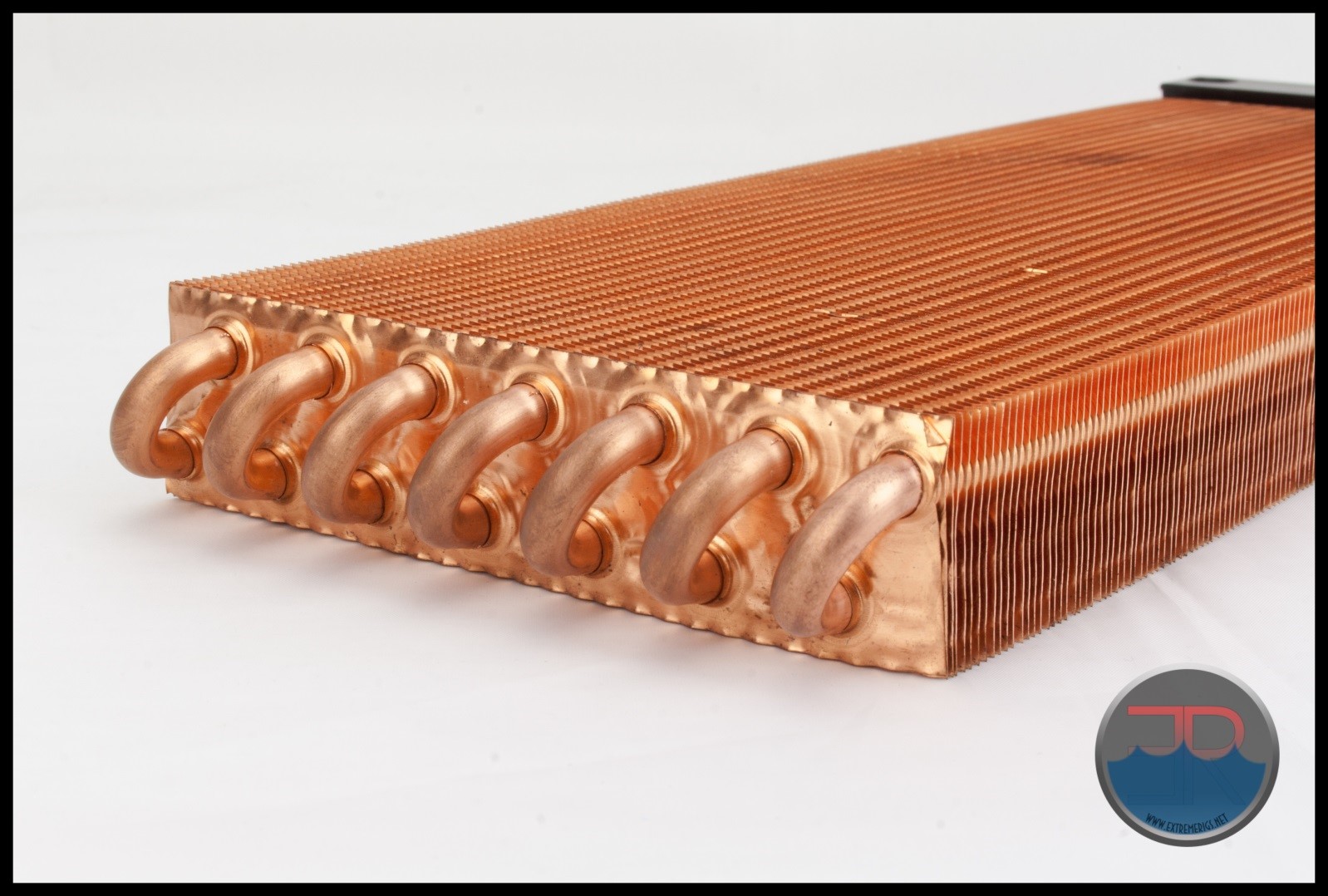 I tried to remove the port end piece to get a picture of the machining inside, but I was unable to remove it from the copper tubes.
I tried to remove the port end piece to get a picture of the machining inside, but I was unable to remove it from the copper tubes.
There has been discussion on which “face” should be the hot side (warm coolant) on the NON U-Flow radiators and which side (face) should be receiving the fresh intake air. This is the first radiator in the group which I have tested flow direction both ways for a comparison.
In the default test chamber setup airflow comes through the radiator from the non-port side and exhausts out the port side.
Going on advice (from HardwareLabs about their Nemesis GTX rads) the port side tubes should be the hot side (with this air flow direction) acting as a pre-cooler of sorts for the non-port side which receives the cool fresh air. I decided to name this flow direction OptiFlow. The reverse flow direction I (rather boringly) named Reverse Flow.
At this stage I thought that it was unusual that Aqua Computer have chosen to place inlet/outlet direction arrows on the ports, with no info or reasoning as to why. I assumed that the coolant flow path (OptiFlow or Reverse) would make a difference in performance and the required port for coolant inlet would be different depending on the installation orientation and air flow direction – think vertical front mount Vs. horizontal roof mount. We’ll see how much difference, if any OptiFlow Vs. Reverse Flow makes later when we look at the data.
My averaged fin count was 13 FPI (Fins Per Inch) and the pic shows just how evenly the fins are spaced on the tubes – beautiful!
Finish and Features
The Radical 2’s raw copper tubes and fins and the first stunning feature that you just can’t help but notice. It is simply a thing of beauty that might be best used in a Push only installation where the core can be shown off.
The next thing that you’ll notice is the stainless steel side panels and return end cover which has a black nickel finish. These are great looking design features that gives another classy element to the Radical 2. Unfortunately (in my opinion) Aqua Computer have ruined the stylish high end feel and look of the stainless steel side panels by laser engraving the somewhat busy logo down each side.
In the picture above you may notice no threads for fixing fans to the rad, or indeed for fixing to the chassis. The fixing “system” uses square threaded nut inserts rather than threads tapped into the frame as normally found on our PC water-cooling rads.
Aqua Computer claim the following:
“For an improved and easier installation process, the Airplex radical series comes with threaded inserts made from nickel plated brass that protrude into the mounting holes of the fans. Therefore, fans are “automatically” correctly aligned to the threads – extremely convenient especially with large radiators! Additionally, this results in a deeper thread and the screw can be positioned farther away from the tubes and fins of the radiator, reducing the risk to damage the radiator by using too long screws. If the radiator is to be installed without fans, the inserts can also be installed upside-down resulting in a nearly flat surface, so there is no gap between radiator and PC case.
Both sides of the radiator are equipped with slide rails for the threaded inserts and inserts for one side of the radiator are included in delivery.”
That’s certainly good marketing – however in truth, there is only really one advantage of this mounting system – in the event of a stripped thread the nut can be replaced with one from the expensive replacements offered by Aqua Computer.
While this option to be able to change the nuts may prove useful – I found this mounting system so frustrating that I dreaded going anywhere near the radiator and having to mount / unmount it with fans. The threaded inserts constantly fall out of the square slots that they go into on the rails and that is on a flat surface on a bench top.
I can’t imagine having to install fans to this radiator in-situ; it would be enough to test anyone’s patience and frustration level I am sure. I wanted to glue the inserts into place but needed some wriggle room when going to mount the fans. This design is so very un-user friendly that I just cannot say enough how frustrated it made me.
The threaded nut appears to be a tight fit in the slot, and it actually is, yet when actually trying to fit the fans they often fall out.
As the thread sticks up into the fan hole, the provided screws are shorter than which are normally provided at just 25mm long, which is the thickness of a standard fan.
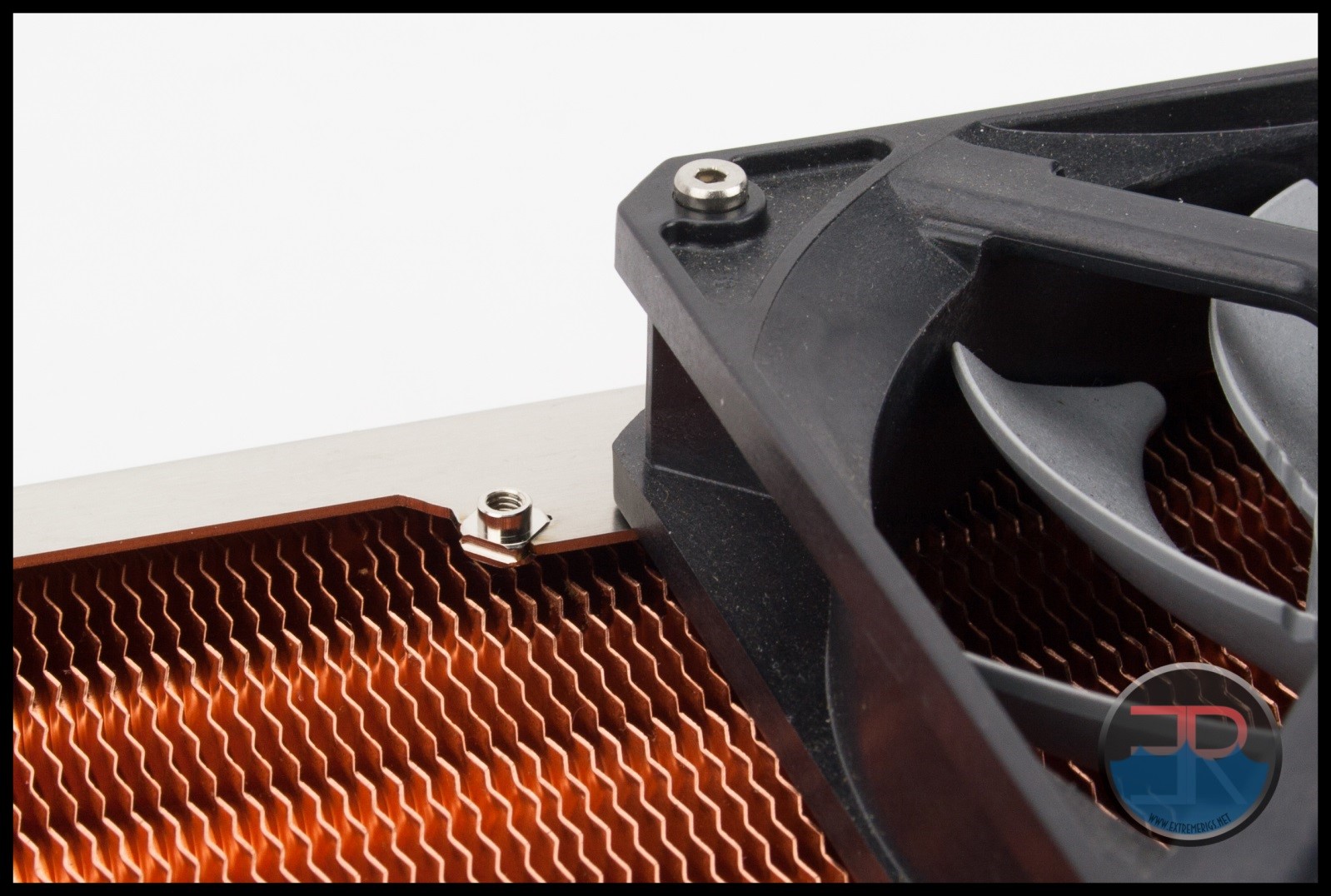 The Radical 2 comes equipped with just the 2 ports, inlet and outlet, so there are no opportunities for dedicated drain/fill ports. As mentioned previously the port end section is a single piece of delrin which really is an amazing piece of design work – and precision machining. The parallel septa-tube (7) flow path is again a design feature unique to the Radical 2. My concern with this design is whether or not the flow can remain turbulent or if will drop flow rate to be laminar and significantly reduce cooling performance. We’ll see in the performance results later.
The Radical 2 comes equipped with just the 2 ports, inlet and outlet, so there are no opportunities for dedicated drain/fill ports. As mentioned previously the port end section is a single piece of delrin which really is an amazing piece of design work – and precision machining. The parallel septa-tube (7) flow path is again a design feature unique to the Radical 2. My concern with this design is whether or not the flow can remain turbulent or if will drop flow rate to be laminar and significantly reduce cooling performance. We’ll see in the performance results later.
So we have a beautifully crafted radiator which certainly has some bling factor. Unfortunately due to the Radical 2 design we are missing the option of alternative ports and have the most frustrating mounting system I have ever had to use on anything.
Let’s see how it performs…
Flow Performance
The Data
As all the testing in this round up was performed with the exact same equipment, using the exact same methods I have decided to keep each radiators page uncluttered by posting our testing methodology, test set-ups and equipment used in a single location. To see exactly how the tests were carried out, details of the test set ups and equipment used, please head back to the RRU Test Setup page.
Restriction Test
It’s generally agreed that radiators are one of, if not the least restrictive components in the water cooling loop. There are some exceptions however, so this must still be verified through testing:
The above photo is for referencing the restriction test bench. The Radical 2 is not loaded so please disregard the data in the picture as it does not relate to the Radical 2 test results.
Here is the raw data at the tested flow rates, displaying the measured Differential Pressure across the radiator as flow rate was increased.
The table numbers indicate that the Radical 2 is a medium restriction radiator. However numbers in isolation can only tell half the story. By plotting against other components it more easily shows the whole story. I have decided to use a HeatKiller 3.0 CPU block as the reference in these plots for two reasons. Firstly there is no chance of the plot being cluttered by curves overlapping and secondly it gives a reference point against a fairly common loop component of average restriction. For radiator to radiator restriction comparisons please see the RRU’15 data pages. As with all the radiator restriction plots I have limited the maximum flow rate displayed to 2.0 GPM as I suspect there are very few systems that operate above 2.0 GPM. For more information on how to read a restriction plot check out our guide.
This plot confirms the Radical 2 as a low to medium restriction level radiator.
The next plot shows the Radical 2’s restriction level at 1.0 gpm relative to other radiators in the test group and again confirms its medium restriction level.
It’s interesting just how different it is to the AMS radiator which at first glance might appear to be the same core. They are in fact quite different!
Onwards to Thermal Performance!
Thermal Performance
The Thermal Data
Moving on from the restriction test bench the Aqua Computer Radical 2 was loaded into the thermal test chamber for a series of tests – consisting of 3 flow rates, each having 3 different fan rpm rates tested. I felt the thermal test data was most important and which you as the reader would be most interested in.
Below is the final data results gathered from at least 2 data logging runs at each flow rate and fan rpm combination. The most stable 15 minute period from each logging run was used and then averaged with the other runs to obtain the data for the table below. A total of 16 temperature sensors were used in the thermal test chamber (8 air in, 2 air out, 3 water in, 3 water out) each take a reading every second and logged via a CrystalFontz unit. The data in the table below is the result of the logging runs which has then been used to create all the plots and tables there-after.
The performance metric of critical importance is the delta between the warm coolant temperature in and the cold ambient air temperature in to the radiator. Given that the system is well insulated and in equilibrium and we know the heat input to the system then we can also calculate a very important number – that is the amount of power required to raise the coolant temperature 1C (or 10C which is more useful reference point).
First tested was the Reverse Flow:
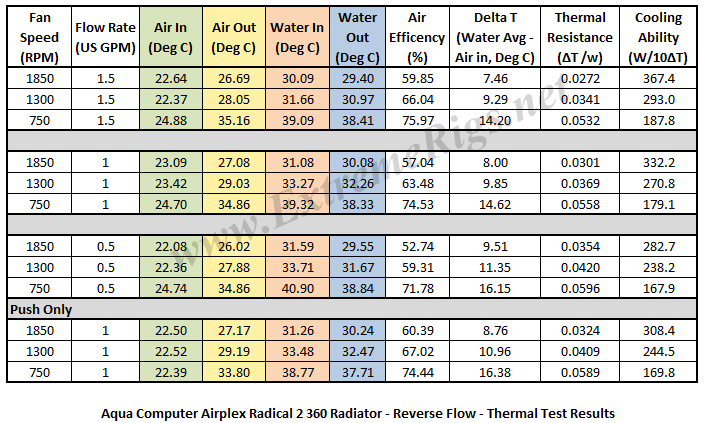
At a later date the Radical 2 was reloaded into the thermal chamber with a slightly reconfigured tubing arrangement to accommodate the OptiFlow testing:
Let’s take a look at the Delta T results from the 2 tests, in bar chart form first with reverse flow:
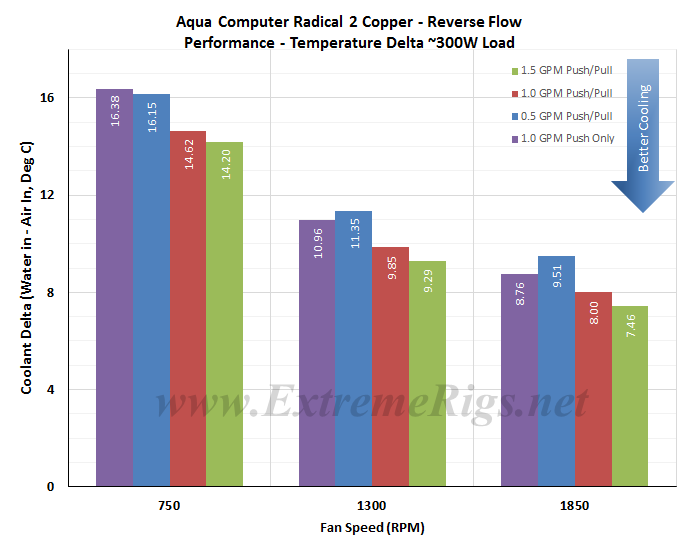
Comparing the Reverse flow above to the OptiFlow results below we can see a similar pattern so probably not much to take out of this comparison. Of interest however is the lower temps achieved by the 1.0 gpm Push only compared to the 0.5 gpm Push/Pull with medium to high speed fans:
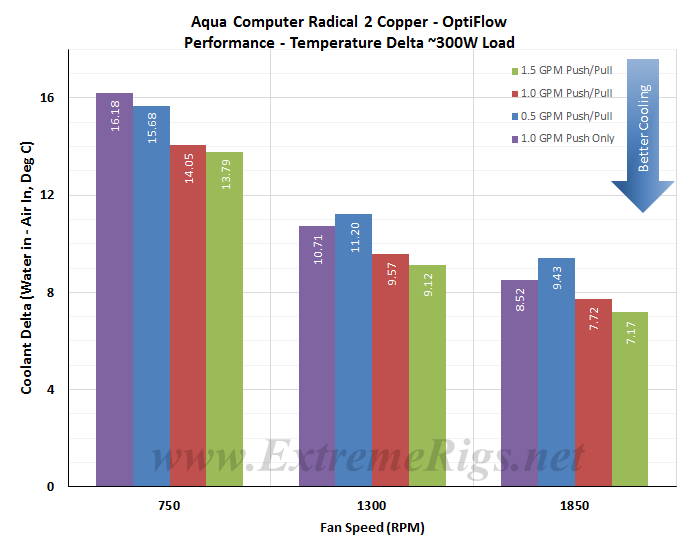 Delta T results (as above) are not always helpful when thinking about how many radiators you would need to cool your system. Instead it’s more useful to know the delta/W, or more usefully, the inverse metric of W/delta C. The metric plotted below tells us how many watts are dissipated by the radiator when the coolant rises 10C above ambient temperatures. (10 Delta T):
Delta T results (as above) are not always helpful when thinking about how many radiators you would need to cool your system. Instead it’s more useful to know the delta/W, or more usefully, the inverse metric of W/delta C. The metric plotted below tells us how many watts are dissipated by the radiator when the coolant rises 10C above ambient temperatures. (10 Delta T):
This seems a good a spot as any to mention that the OptiFlow testing on all the radiators that could benefit from it produced some results that were not as expected. The AMS was no exception (as seen above) and despite numerous retesting the results left us bewildered at times at the data which was produced. The main cause for bewilderment was the calculated power dissipation result (Coolant Delta x Flow Rate x Heat Capacity) which is then used to calculate the overall performance metric (W/10DT). Some of the discrepancies we can attribute to error margins – that being uncontrollable fluctuations of the test rig such as power fluctuating which can effect fan speeds, flow rate and heater power. However despite many retests and even having a 1000 watt power conditioner between the wall and the PSU there is still something funky with the optiflow push data. I wish I had a proper explanation for some of these results, but at this stage unfortunately I do not. So I am going to present the data and try to ignore the abnormalities that may exist.
As expected increasing airflow through the radiator is the primary determinant in changing the radiators performance. However, in Reverse Flow we can clearly see dropping to the lower flow rate of 0.5 gpm has a negative effect on cooling performance. So much so that a Push only fan set up at 1.0 GPM outperforms a Push/Pull set up at 0.5 gpm. We’ve seen evidence of this low flow rate performance hit before, but never across all 3 fan speeds!
In the OptiFlow W/10DT plot the same low flow performance hit can be seen at high fans speeds in Push/Pull, but tapers off as fan speed was decreased. So OptiFlow shows up its first major difference. The variance in performance with all speed fans using Push/Pull is better, if by only small margins with OptiFlow
When we look at the Push only results though things change up a bit, with the 750 RPM Push only OptiFlow result being significantly lower than the reverse flow. This was a common trait with the OptiFlow radiators that could not be explained, and it wasn’t limited to the Delta T, the calculated power was significantly different for OptiFlow Push @ 750RPM that was consistent across many retests and remounts and radiators.
This data can now be plotted as a pretty curve so that an end user can interpolate their own fan speed. Note again that the extrapolation of the curve is much more sensitive to error than in between the tested range. Let’s exclude the push data for now and come back to it:
Reverse Flow first:
And the OptiFlow – the OptiFlow Vs. Reverse Flow data is so similar that when I tried a combined chart they pot lines just blurred over each other so I kept them separate.
Those plots make it easier to see that at higher fan speeds that a low flow starts to impact the cooling performance. This makes sense if you take it to the extreme and think about a very low flow rate where the coolant is already cooled 99% of the way to ambient with 10% of its journey through the radiator. In this example the radiator is not being efficiently used. 90% of the radiator surface area would then be wasted and you could have used a smaller radiator. Both coolant flow and air flow can limit thermal performance, however in typical systems flow is a much weaker effect than airflow due to typical choices of fans and pumps.
If we now come back to the push data it’s good to compare the push only to push/pull data in an “apples to apples” fashion by only looking at the 1GPM data:
In Reverse Flow, Push only gives around 92.5% (averaged) of the performance of the Push/Pull 1.0 gpm test results on this radiator. As we have seen, at high enough air flow that 1.0GPM Push does overtake 0.5GPM Push/Pull as the flow rate starts to limit performance.
In OptiFlow..well it’s one of those plots which is hard to explain. It seems illogical that a Push Only Fan set up could beat a Push/Pull set-up. Our testing never crossed that line, but the poly line points to a cross over at around 2300 rpm which I am inclined to write this off due to test error margins and inaccuracy of the poly line calculation when extrapolated:
Normally we see that the effects of flow rate changes are quite small, particularly at 1.0gpm and above, so in this next plot all three flow rate results were averaged together to produce one curve. Averaging reduces test error of course so this helps further to be sure of our data and is more useful therefore for comparing to other radiators.
Here one of the top performing and worst performing radiators have been plotted along with the Reverse Flow and the OptiFlow to see how the Radical 2 compares against them:
As you can see the Radical 2 in both flow paths performs far worse than the the worst performing radiator from the Group 1, testing at all fan speeds. In addition the direction of the radiator makes very little difference. This doesn’t bode well.
Now let’s analyze that data some more….
Analysis
This first table shows the Radical 2’s Watts/10 Delta Temp numbers in a quick glance chart format.
Using the data compiled from the Aqua Computer Radical 2 thermal testing I have compiled the following tables in an attempt to show other ways of how its performance varies against itself at the flow rates and fan speeds tested. Effectively these show percentage gains relative to a reference point. It’s an interesting way to show gains/losses while changing a variable.
First let’s focus on 1300 RPM as our reference and see how much gain or loss in performance we get by changing fan speed.
As seen earlier the OptiFlow Push Only 750 rpm result sticks out like a sore thumb.
In the next plot we focus on changing the flow rate with 1.0 GPM as the base line. These percentage changes are higher than usually seen, so we may delve deeper a bit later on.
How about we combine both flow rate and fan speed as reference points and have a look at 0.5 GPM & 750 RPM as the reference point.
Lastly, we change the reference and choose our center 1300 RPM and 1.0 GPM as our reference point to show both effects concurrently:
So from the data above we can get a very good idea of how the Radical 2 radiator performs relative to itself. But there is a large selection of 360mm radiator models to choose from, released from numerous manufacturers. So, we need to start comparing performance between them. To see how the Radical 2 performed against the other radiators tested, I have included the averaged flow rate comparison charts from the Round Up. We know that the flow rate has little impact on thermal performance so averaging of the 3 flow rate results gives us a good look at head to head performance at the rpm speeds tested at with even less error.
Let’s focus on the Push Only results for now and come back to the Push/Pull data later. While for Push/Pull we tested three flow rates, the Push Only testing was conducted only at 1GPM in order to save time.
Let’s start with 750RPM and see how it compares to the competition:
Here the unusual result of Reverse Flow outperforming OptiFlow is what I found most interesting. Compared to the rest of the radiators tested, the Radical 2 results were not sensational, with the “better” Reverse flow result being ~ 12% being the category winner. It did at least beat some radiators that were designed with high airflow in mind.
How does the Radical 2 compare at Push Only 1300 RPM?
At 1300 Push Only the Radical 2 was ~20% behind the winning radiator and is now solidly last. A trait that we can only expect to continue with increasing airflow at 1850 RPM:
The Radical 2 was last again, falling further behind and now ~23% behind the winner.
So the Radical 2 performed terribly in Push Only compared to the competition. Its best results was at the lowest fan speed. So if the trend continues into Push/Pull (with added air flow/pressure) we can be reasonably safe in predicting that the results / comparisons are going to be just as bad if not worse.
Let’s have a look then at the Push/Pull comparisons, again starting with 750 rpm.
Right off the bat then at 750 rpm in Push/Pull the Radical is straight to the bottom of the comparison list ~ 15% behind the category winner. This could get really nasty.
1300 Push/Pull Averaged Results:
In the 1300 rpm category the Radical 2 remains at the bottom of the “leader” board”, now around 27% behind the category winner. It’s becoming clearer that the Radical 2 thermal test results are not very flattering.
Finishing in last place again at 1850RPM, the Radical 2 is now ~ 32% behind the high speed fan category winner.
Its official the Radical 2 is the worst performing radiator of the entire test group. There is no hiding it. Reverse Flow, OptiFlow…it doesn’t matter. This radiator just cannot dissipate the same amount of heat from the coolant as the other radiators.
Shall we also combine the Push and Push/Pull results at the 1.0 GPM flow rate into one plot for each fan speed tested? In the 750 rpm plot below notice how many radiators in Push Only beat the Radical 2’s Push/Pull result – particularly in Reverse Flow:
At the 1300 rpm – well this is getting embarrassing for the Radical 2.
And at 1850 – I don’t even know what to say.
From all of test results we created “Average Performance Factor” charts for both Push and Push/Pull and then a combined plot called the “Master Performance Factor”. The radiator with the best cooling ability (W/10ΔT) at each gpm/rpm combo was awarded a score of 100, and each other radiators W/10ΔT result was scored as percentage of the top performer.
This way of looking at the comparison takes away any advantages that a radiator may have at higher or lower fan speeds and looks at an overall average. While this appears fair it does tend to favor those radiators that are all-rounders and those radiators which do very well at high RPM. Most users should be more focused on their specific use case. Check in the Round Up for performance comparisons at every gpm/rpm combo for even more details and cross comparison results.
Here are the Radical 2’s percentage scores at each data point that thermal tests were conducted at:
All those low numbers and red boxes confirm what was shown previously, that the Radical 2 is not capable of competing in the heat dissipation department. The 750rpm percentage numbers do appear better (slightly), but it must be remembered that all the numbers are low in this category, so the percentage numbers will be much closer also.
Then we started averaging the percentage scores at each flow rate giving us the Averaged Performance Factors of each radiator.
Firstly – the Push Only APF:
No surprises that The Radical 2 has the lowest APF score in Push Only given the results we have seen previously.
Now the Push/Pull APF:
Again a last place, with a Reverse Flow score so low that the percentage scale had to be adjusted down to 70% where previously it was 75%.
Finally we created the Master Performance Factor which is calculated from the averaged results of all the thermal tests, Push and Push/Pull at all flow rates and all fan speeds.
The Radical 2’s MPF results were the worst of the test group – no surprises there given that it was last at nearly every data point that we tested at. It has been shown that that the Radical 2 is a very poor performer and at some stage we have to start pointing towards possible reasons for it.
As with the Radical 2’s stable mate the AMS 360 which we also tested, I believe that the large round tubes and relatively flat fins are the main reasons behind the Radical 2’s poor thermal performance (relative to the competition). While I am unable to provide evidence, I believe that the parallel round tube flow path may be the primary reason for the poor performance. With the flow rate being split between 7 tubes it could be that the flow in each tube has dropped into a laminar flow, significantly reducing potential performance. Despite the additional FPI of the Radical over it’s AMS stable mate the thinner and narrower core seemed to hurt it more at every single test point.
Whatever the reasons, the thermal performance results are disappointing to say the least.
Next up – Summary!
Summary
Thermal Performance
Thermal Performance scores are derived from the relevant Performance Factor scores. We set this scale with 75% and below as the 0 mark, with each 2.5% increase from 75% in relative performance adding 0.5 to the awarded performance score.
Push Only Thermal Performance – 1.0/5
The Radical 2’s. Reverse Flow and OptiFlow averaged out at 79.35 resulting in a thermal performance score of 1.0.
Push/Pull Thermal Performance – 0.5/5
As we have seen in the data the Radical 2 had extremely poor thermal performance in all the Push/Pull tests, so it was no surprise that a very low score of 0.5 was generated for its Push/Pull score.
Overall Thermal Performance – 0.5/5
Averaging actually brought the Overall Performance Score higher than it would have been without the Reverse flow included. In any case the thermal performance of the Radical 2 remains extremely poor and is the lowest of the entire test group.
Features & Quality – 3/5
The Radical 2 360mm Copper has stylish looks and is well constructed using quality materials. The stainless steel and cooper is striking in appearance and should visually appeal to everybody. The only downside I see is the logos laser engraved on each of the side panels. It is the quality German design and construction with awesome looks which boost the score because the feature set is quite disappointing.
Having just 2 ports (inlet & outlet) the Radical 2 does not offer any opportunity for dedicated fill or drain ports.
The nut insert system used for mounting the rad and fans is the most frustrating system I have come across. I think Aqua Computer should think again about how beneficial they believe this system is. I don’t think it is too much to expect that full sets of hardware be included, so only shipping with one set of mounting hardware is a little disappointing especially when an additional set costs over $12 to purchase.
No protection plates exist between the nuts inserts and tubes, and as 2 tubes are located directly in line with the screw holes care must be taken to avoid damage during installation if different screws are used.
Summary – 1.5/5
The Radical 2 is a very poor performer in the thermal dissipation department, having the worst test results in both Push and Push/Pull.
It has amazing looks and is very well constructed using quality materials but is lacking in features. The only reason to buy this radiator is that it has the bling and solderless construction of the AMS radiator but at a more affordable price.
I just can’t think of a reason to recommend the Radical 2. Potential buyers should look elsewhere and Aqua Computer might be best advised to reconsider their core design as both their radiators tested were extremely poor performers.
Where to buy: Aqua Computer – $102 USD + shipping from Europe, Performance PCs – $98 + shipping from USA







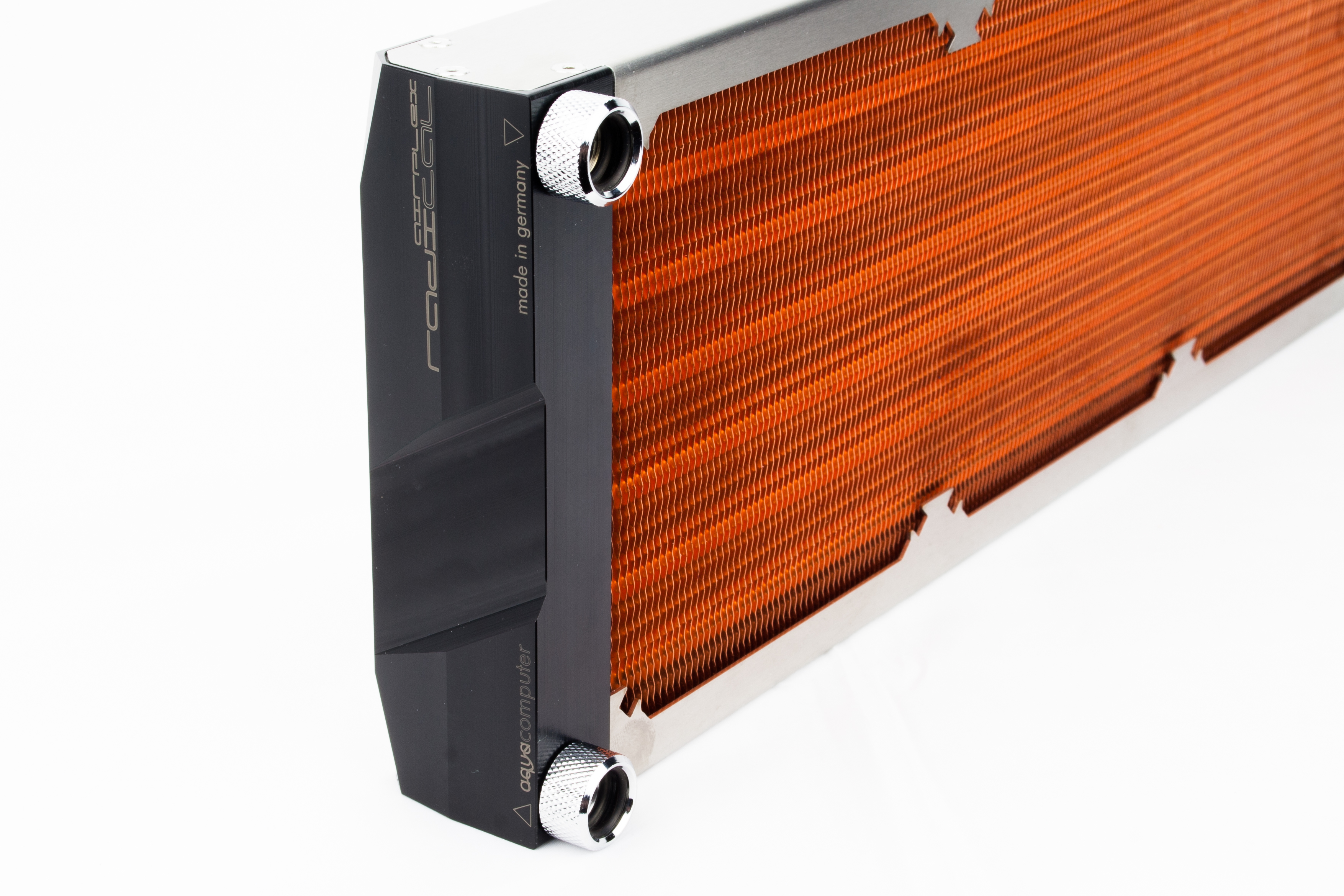
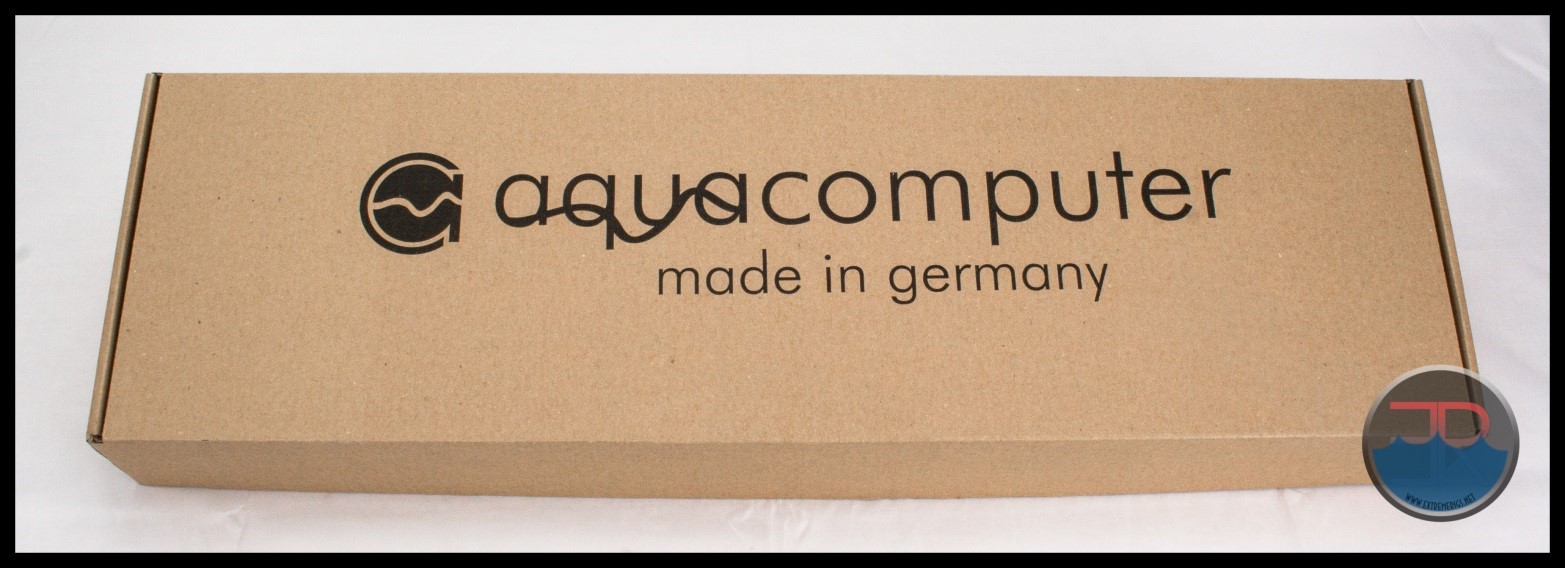
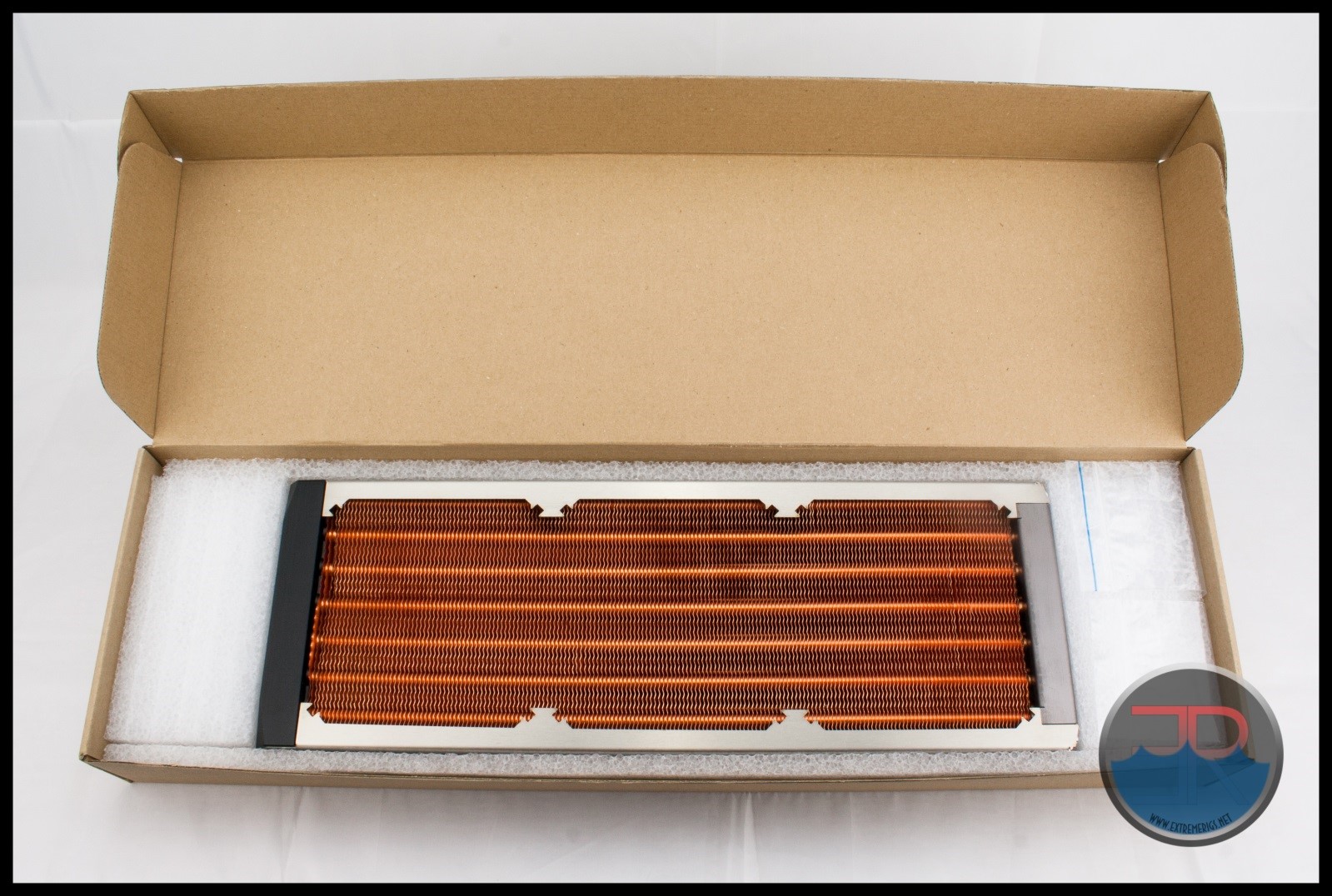
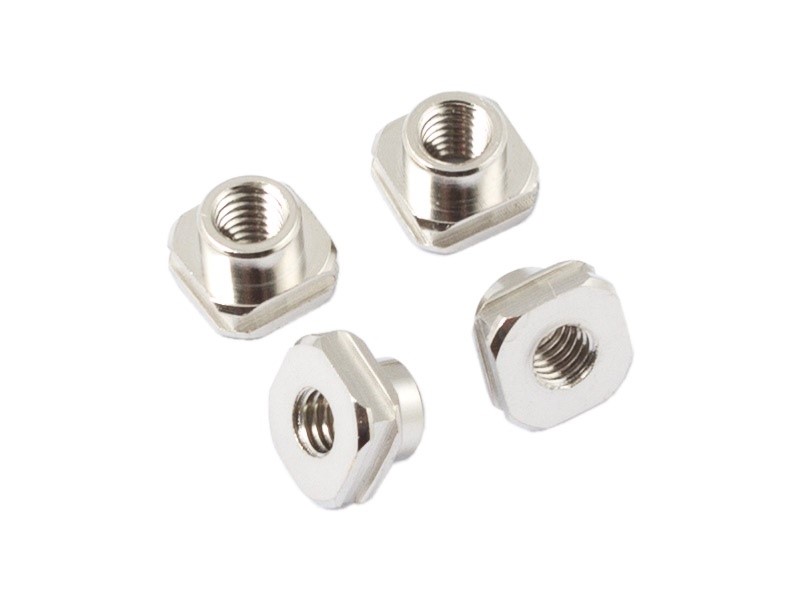
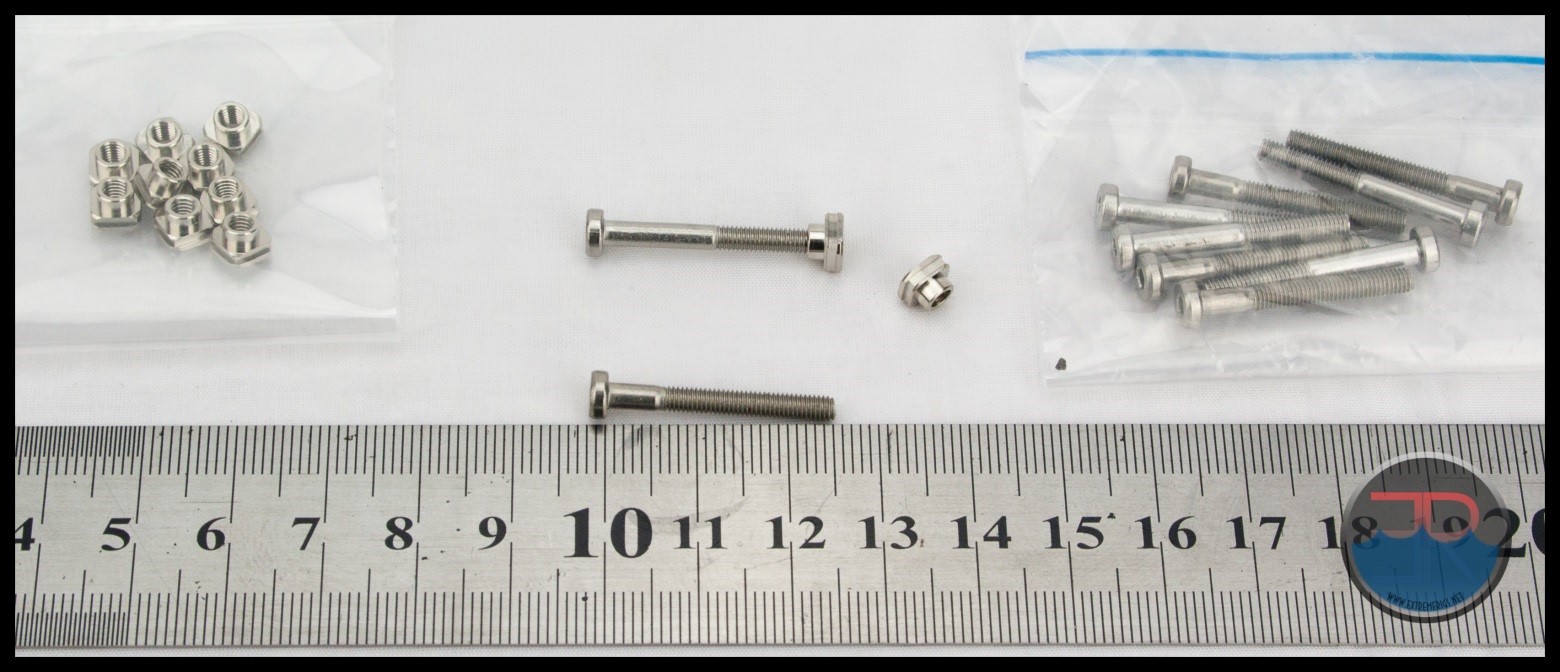


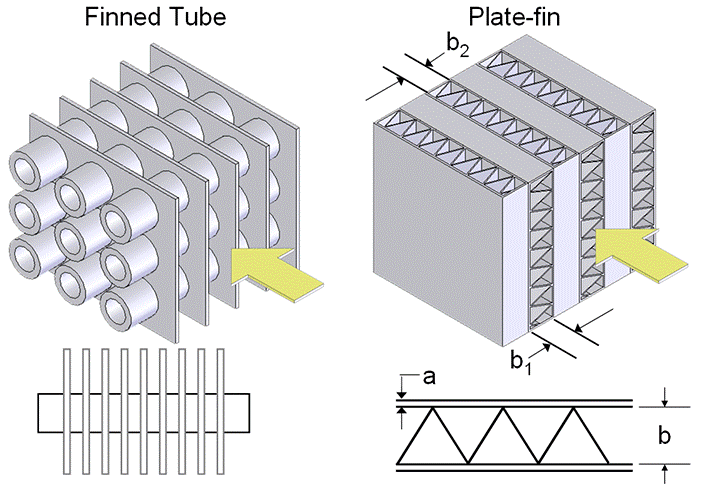
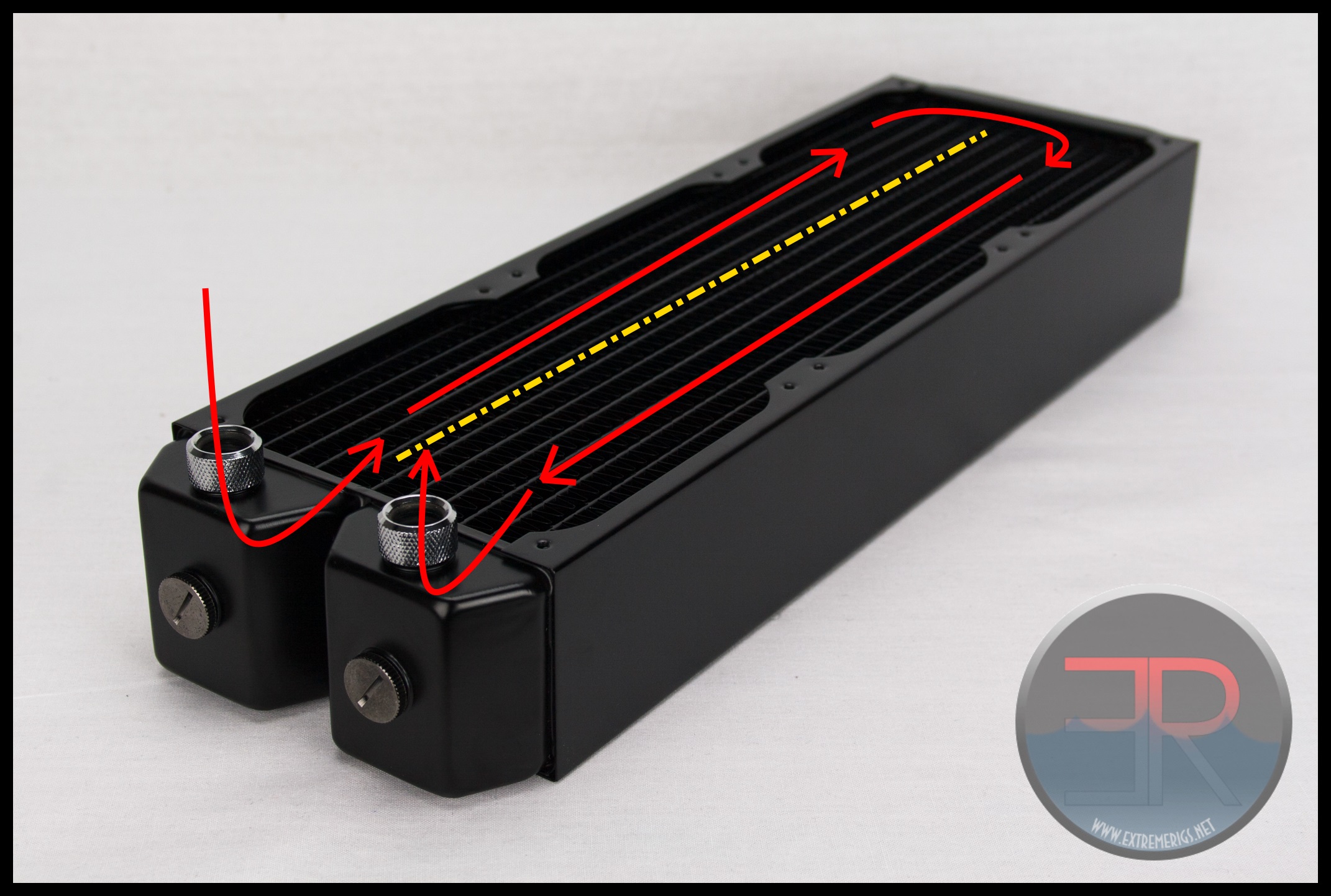
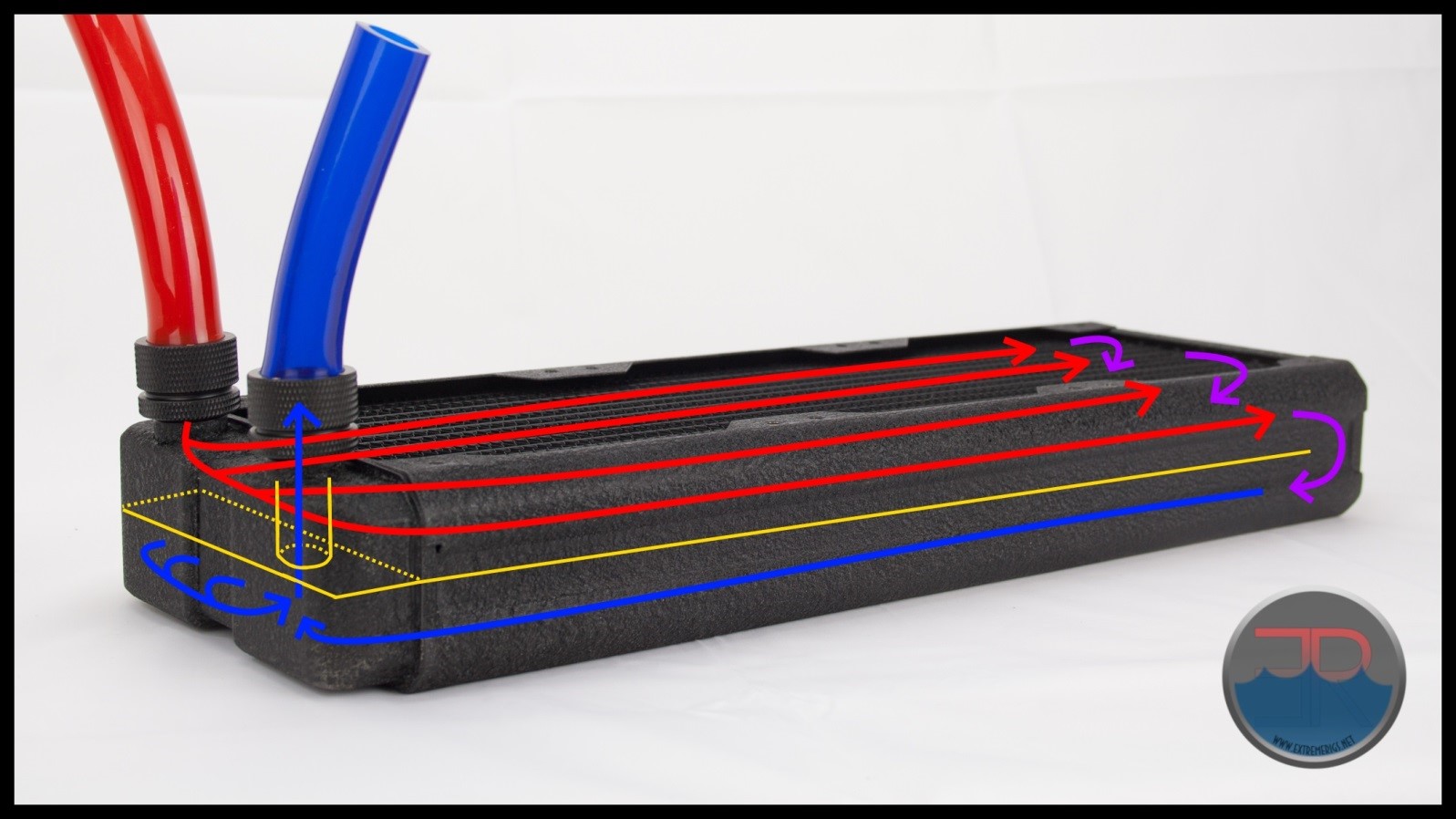
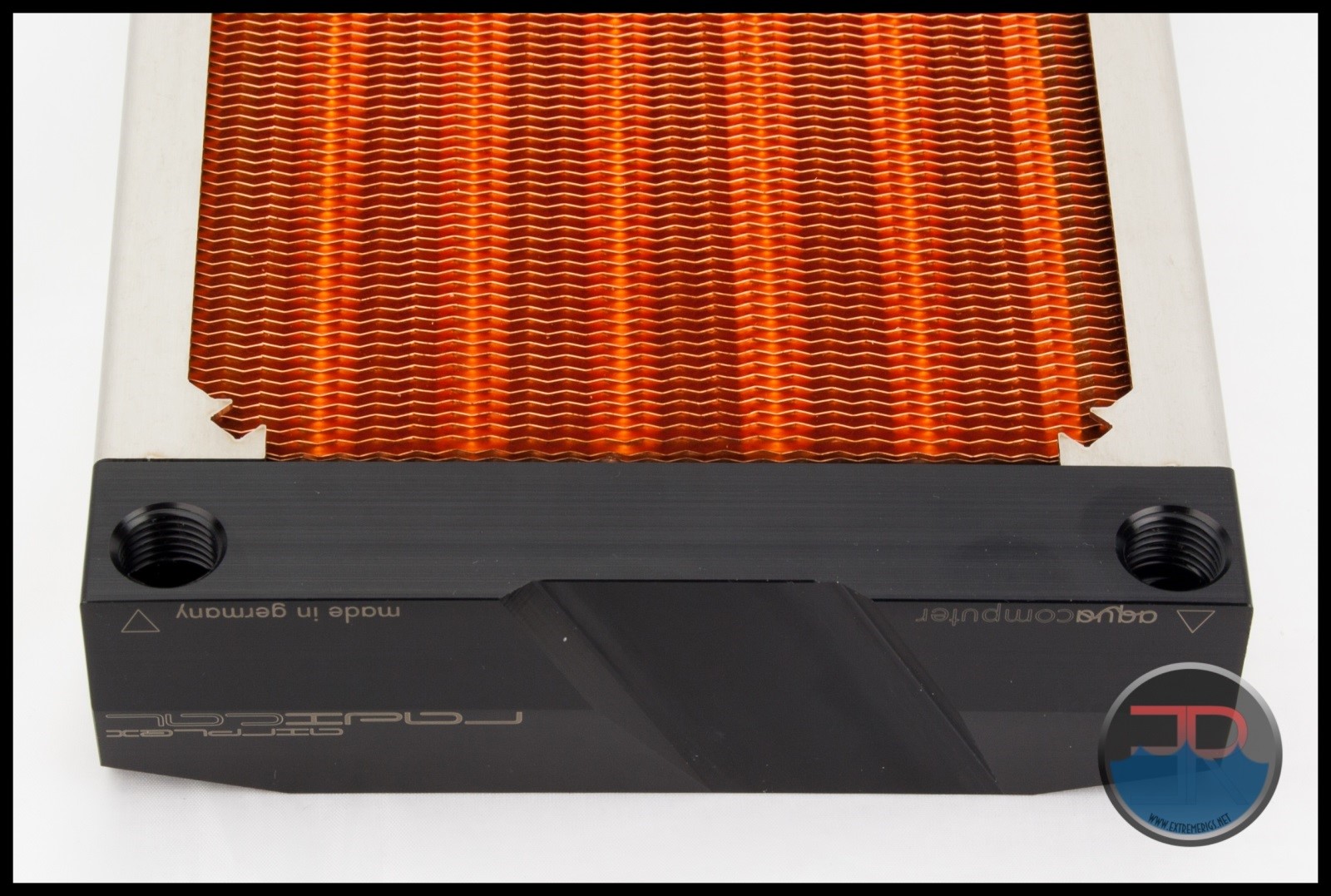
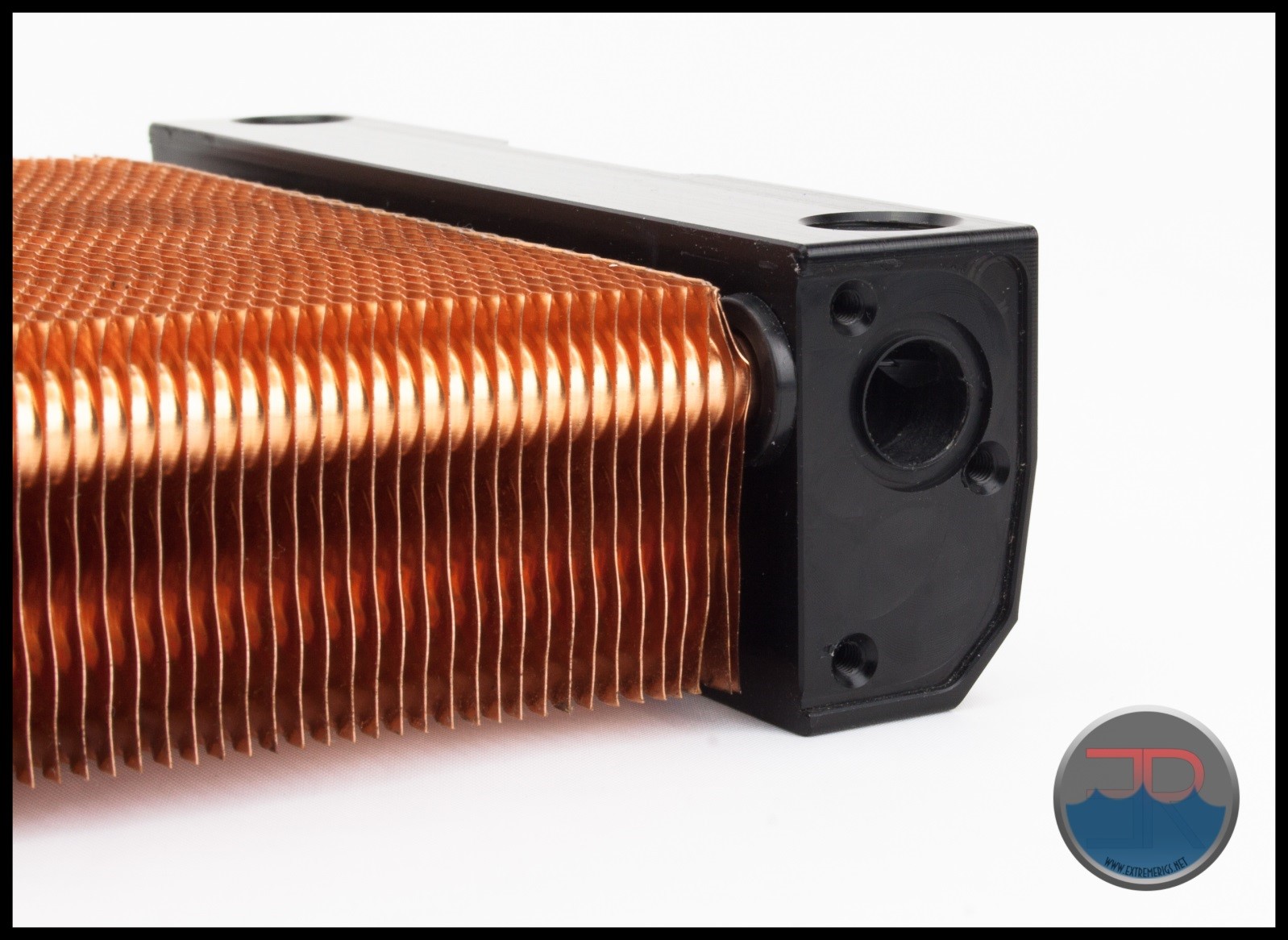
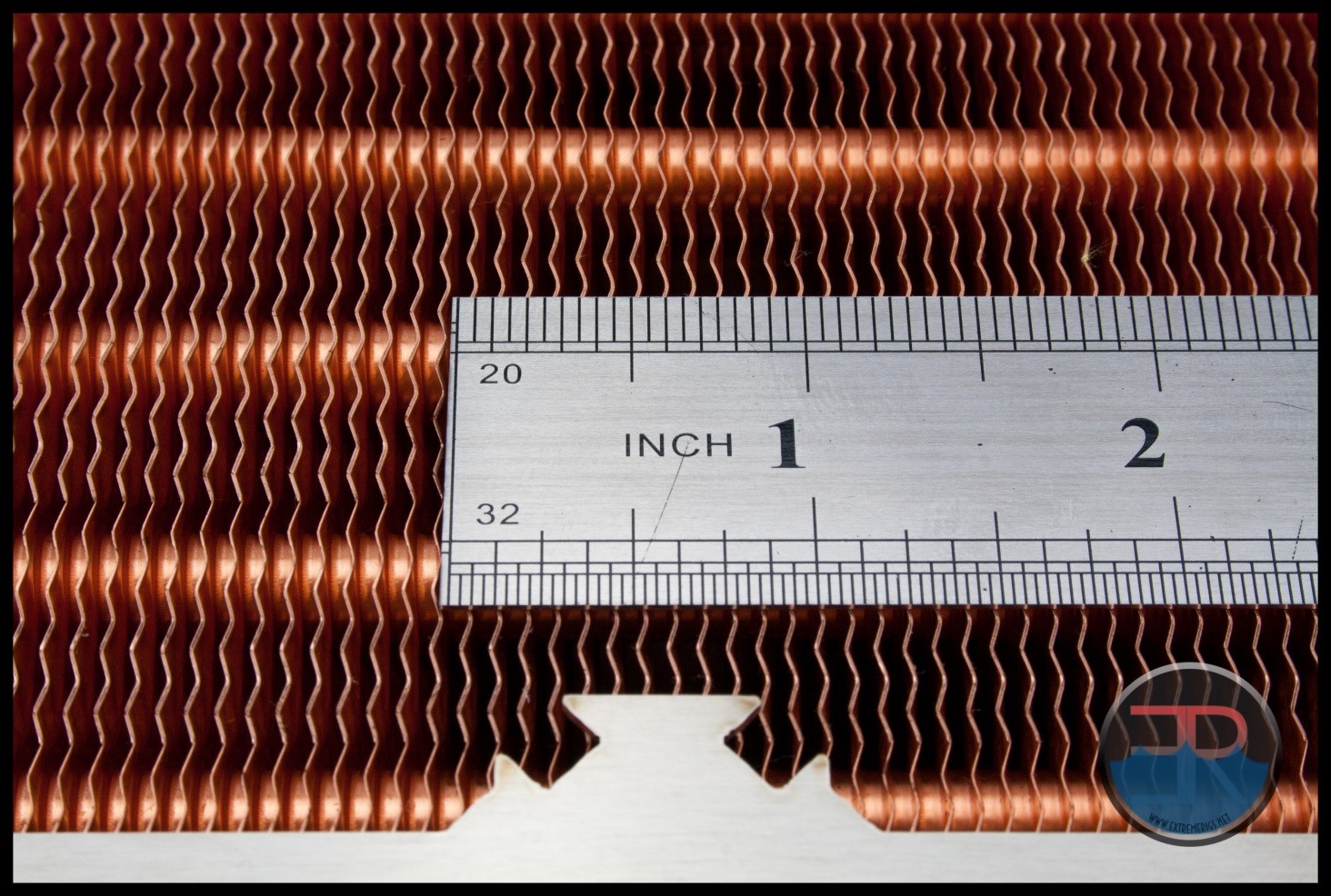
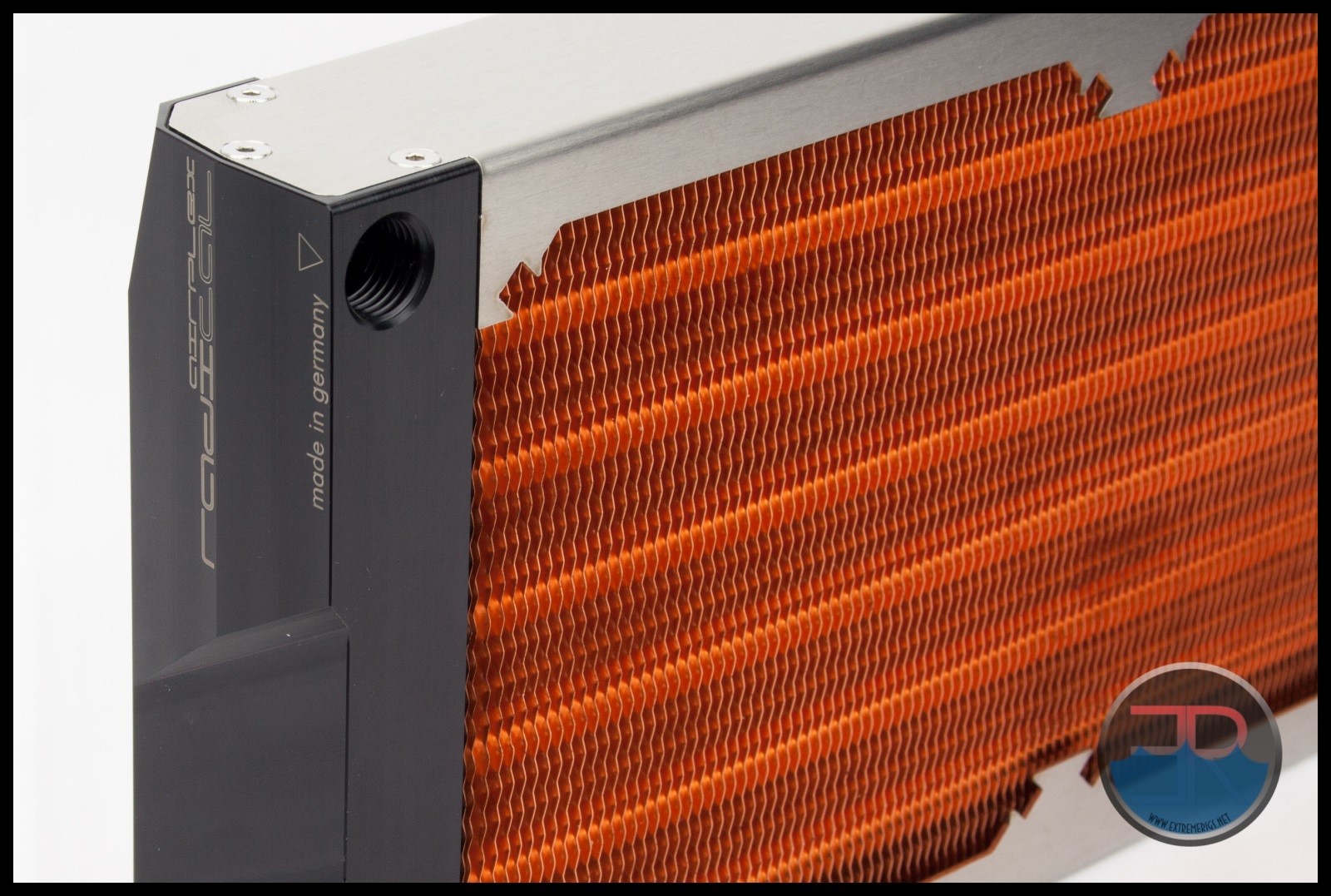
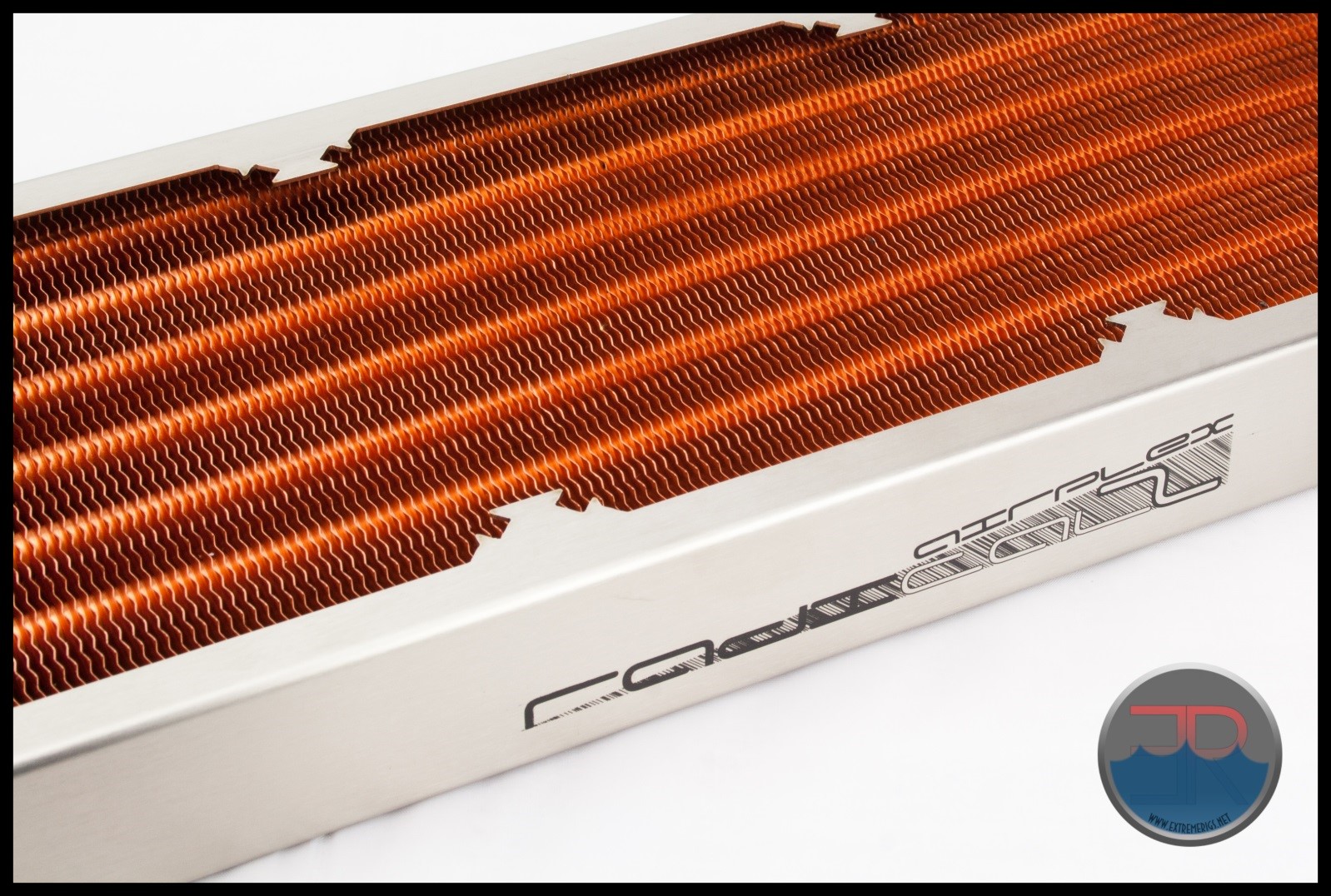
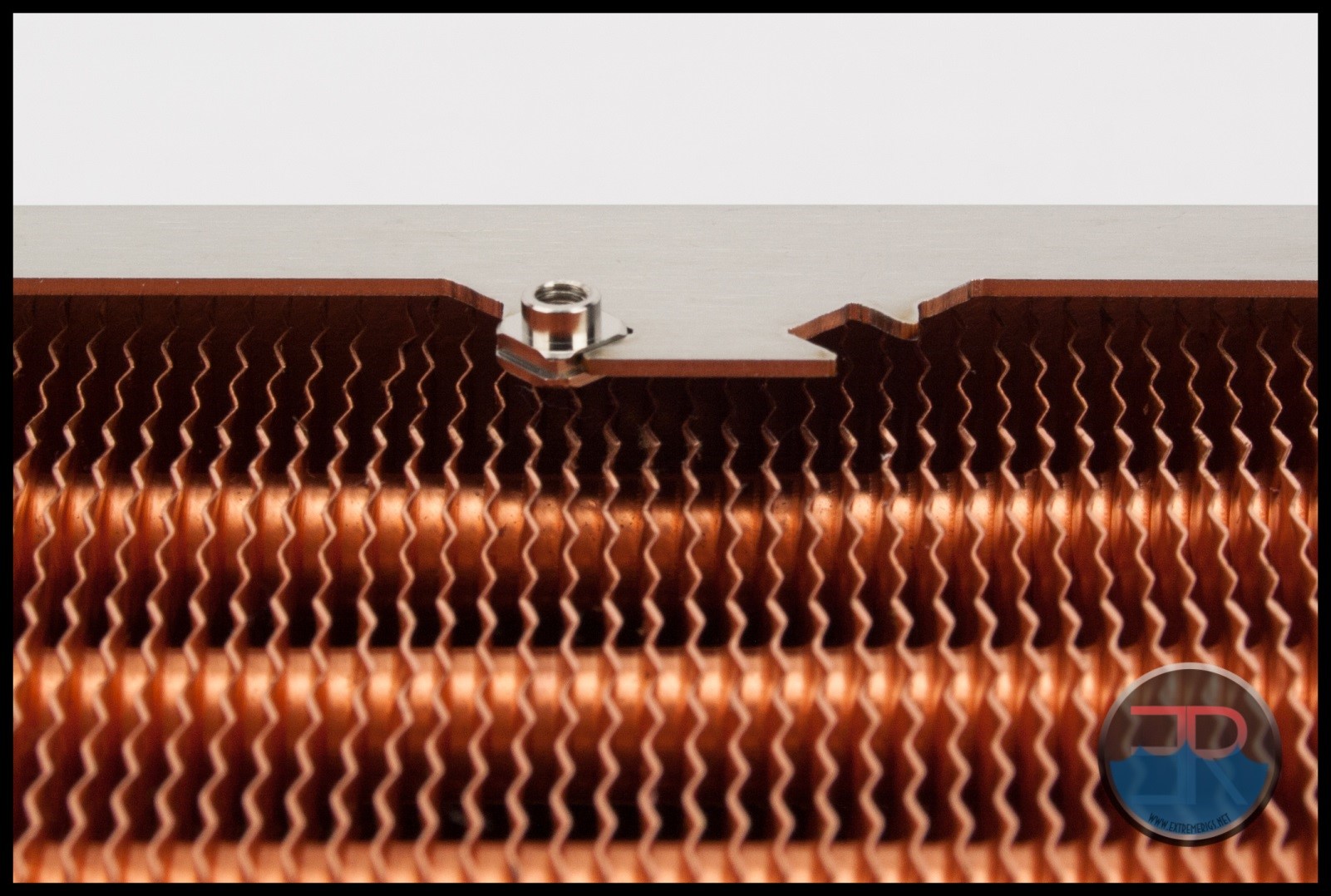
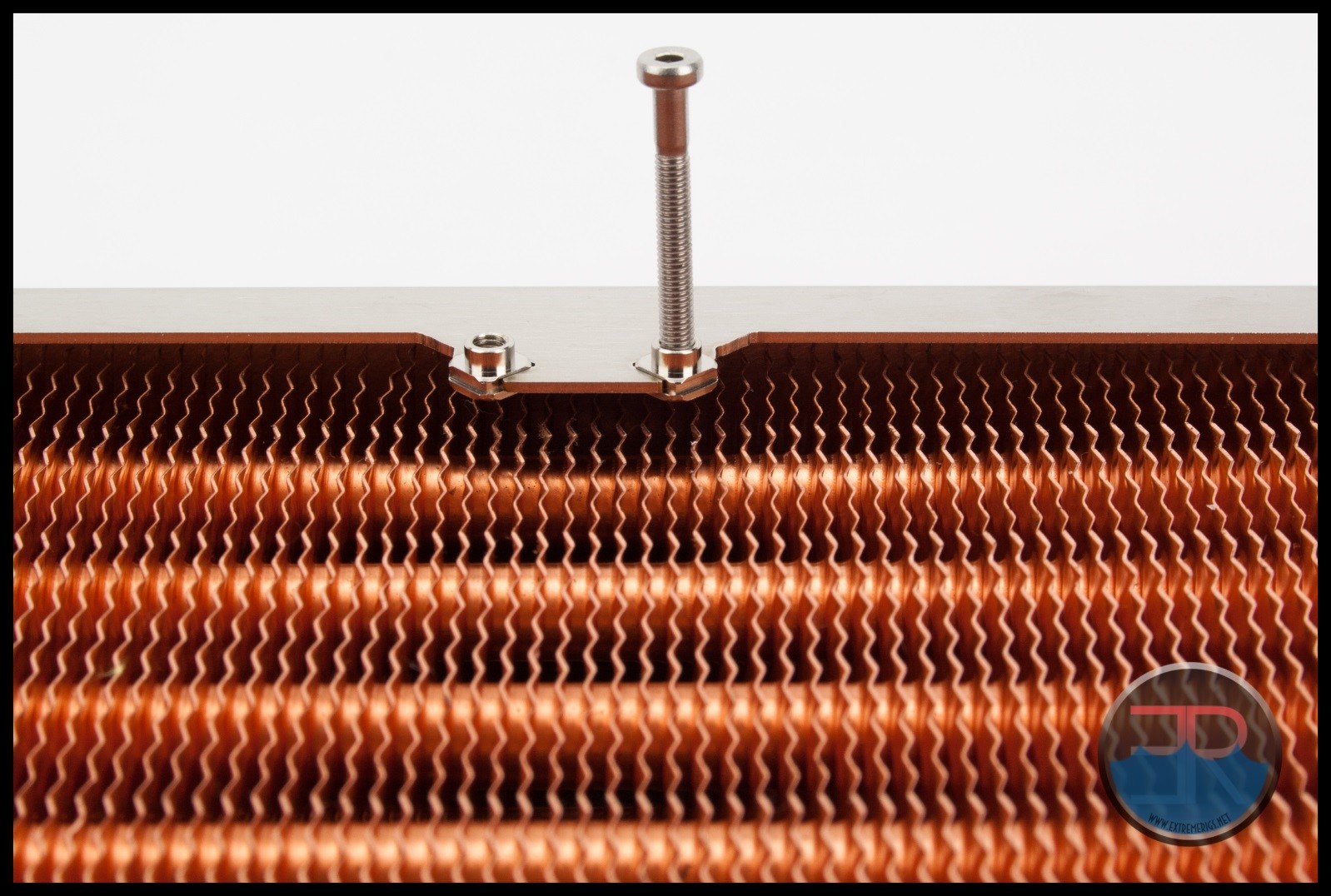
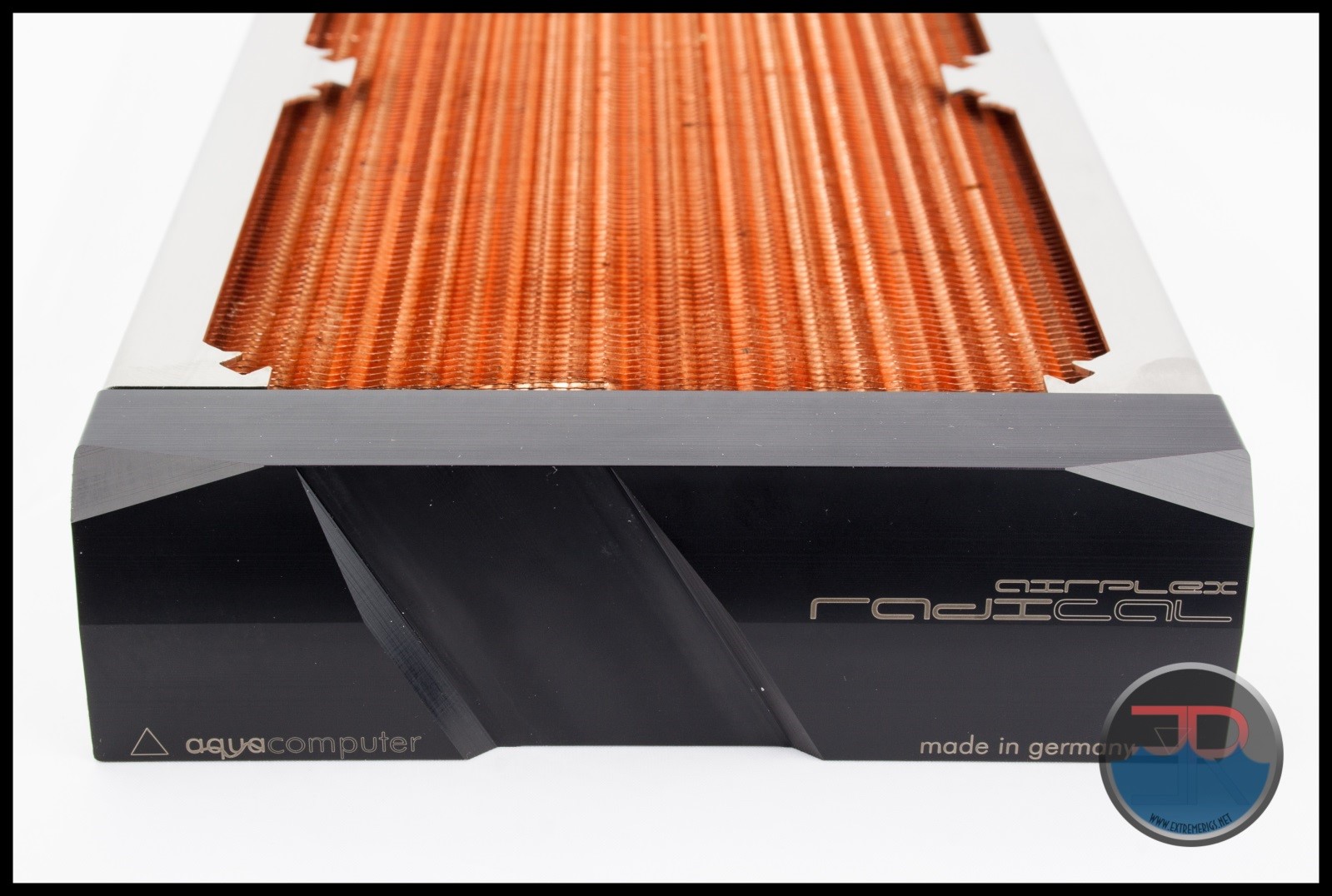
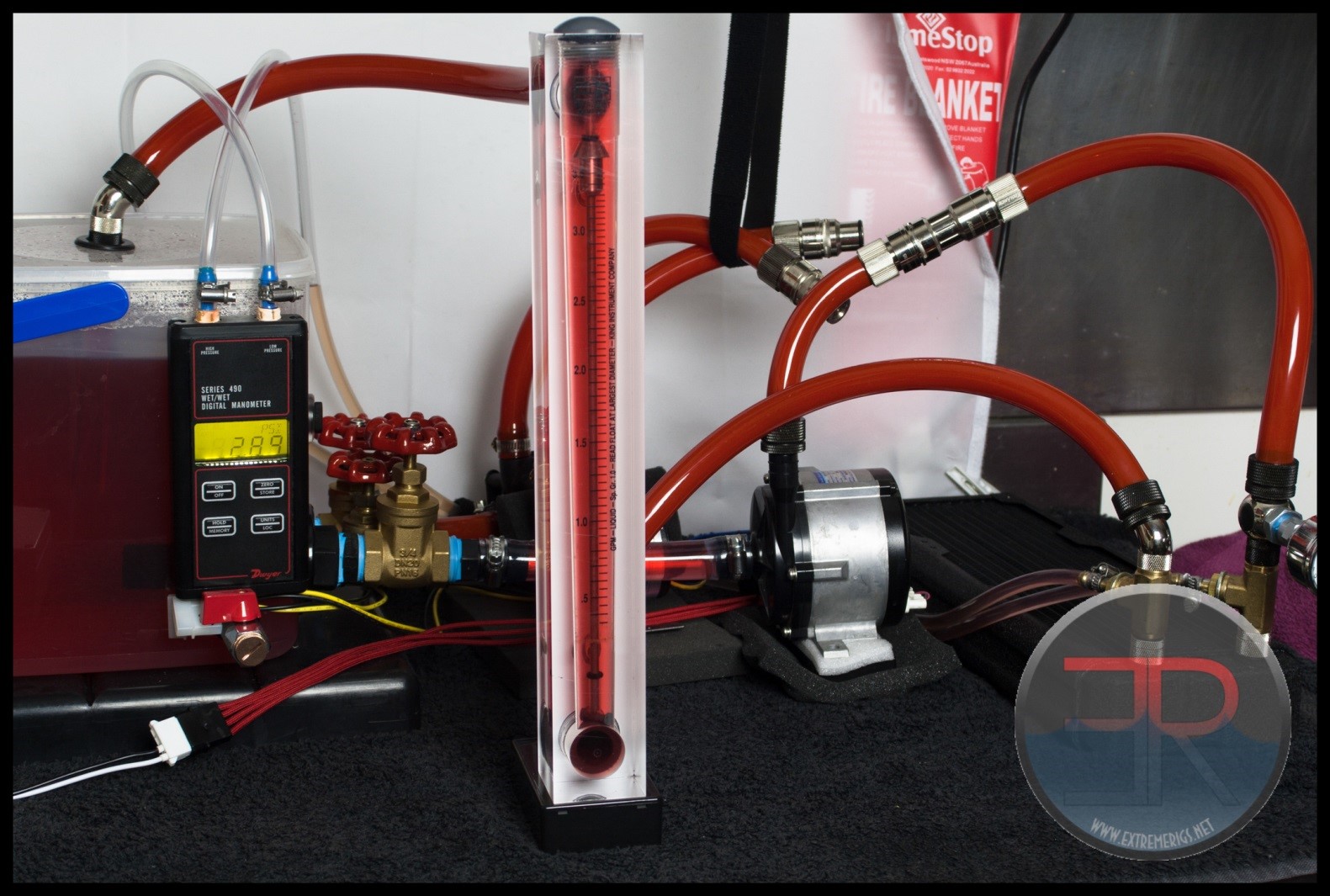
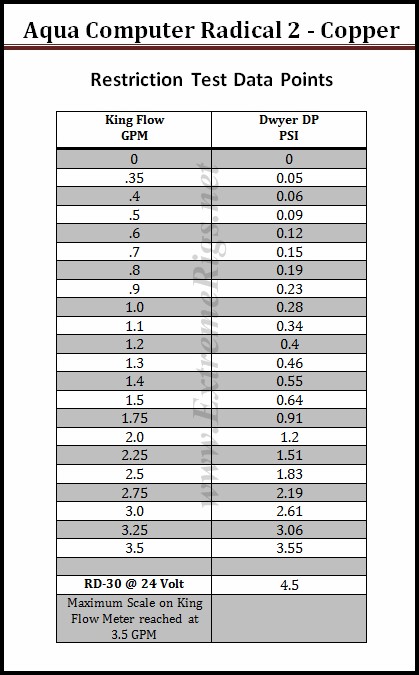
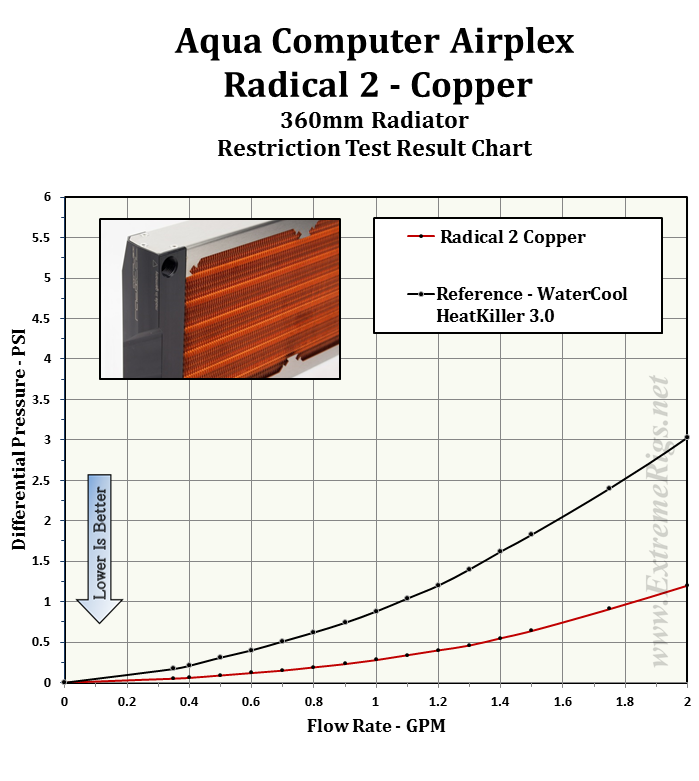
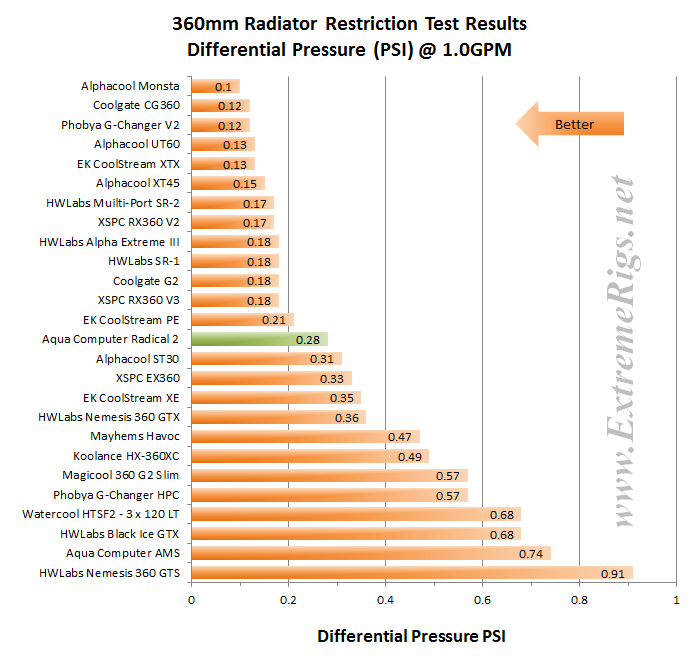
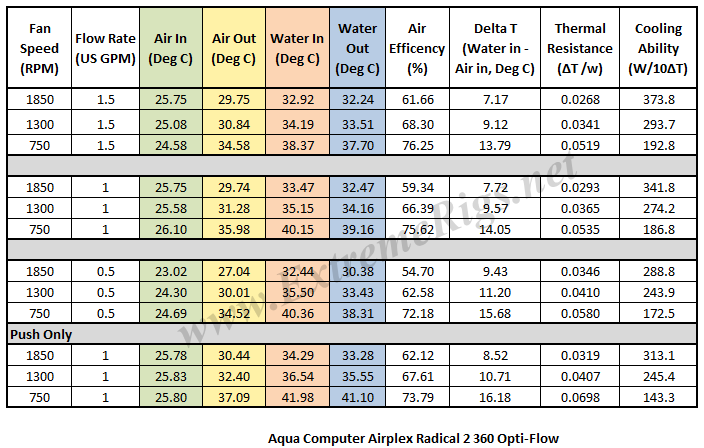
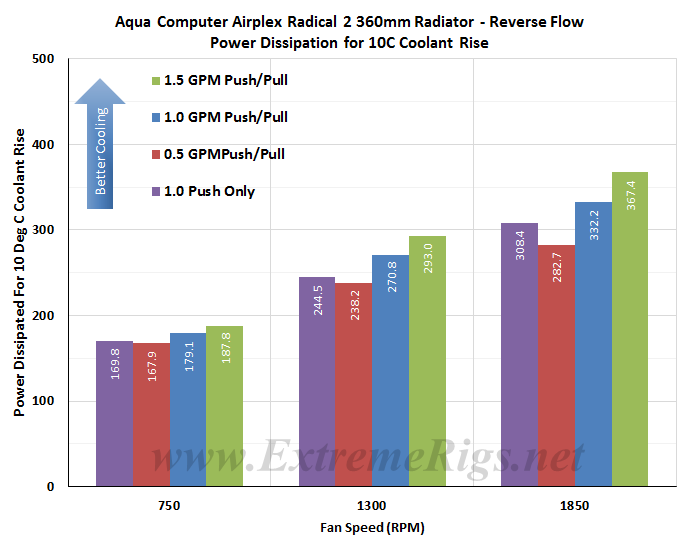
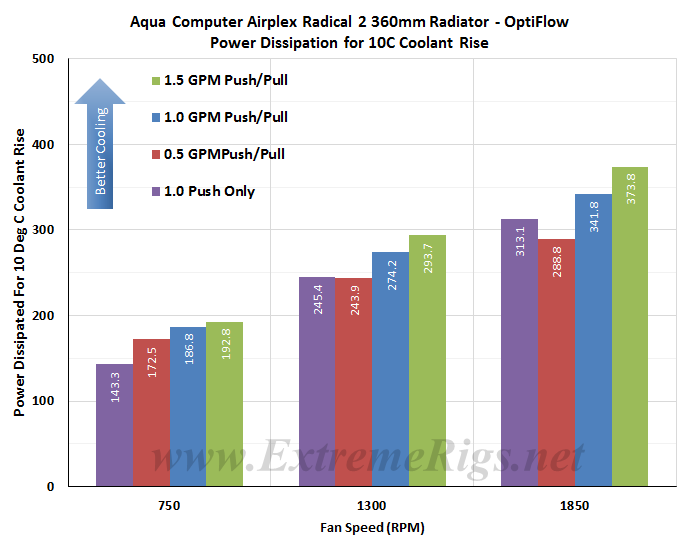
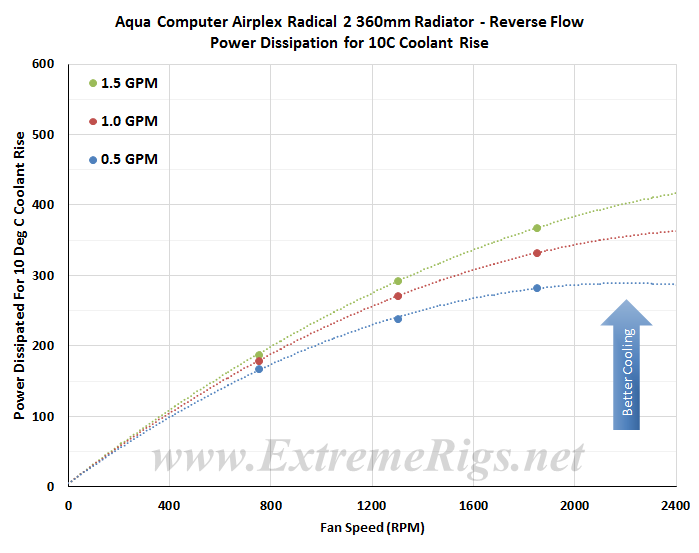
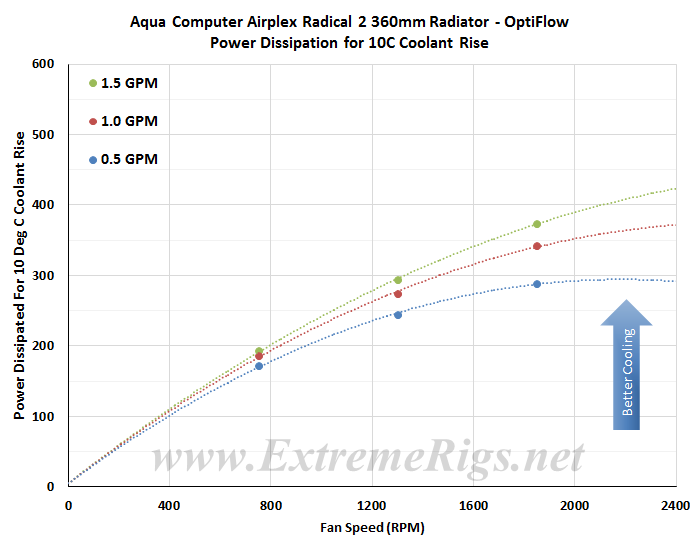
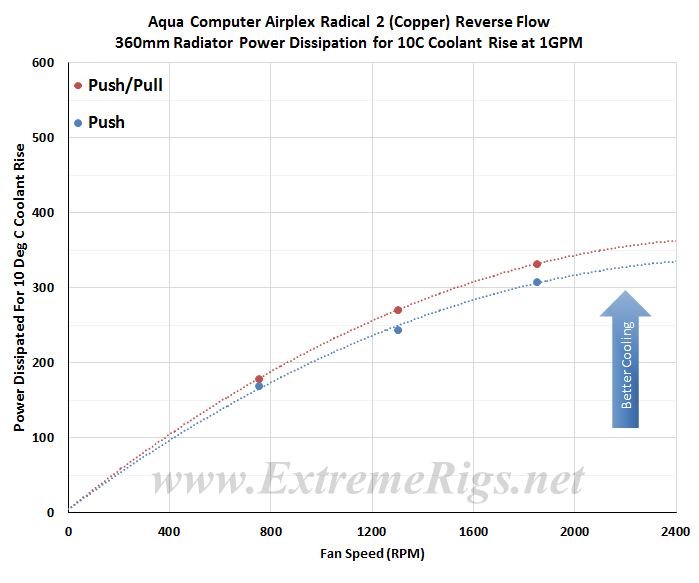
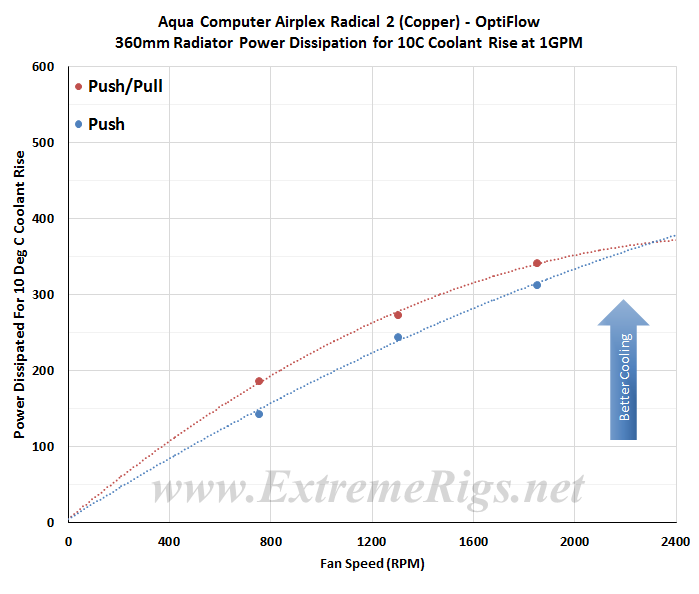
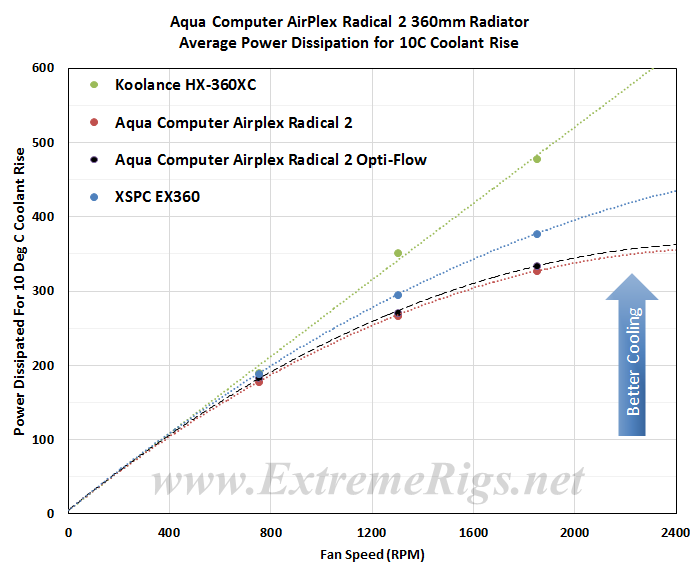






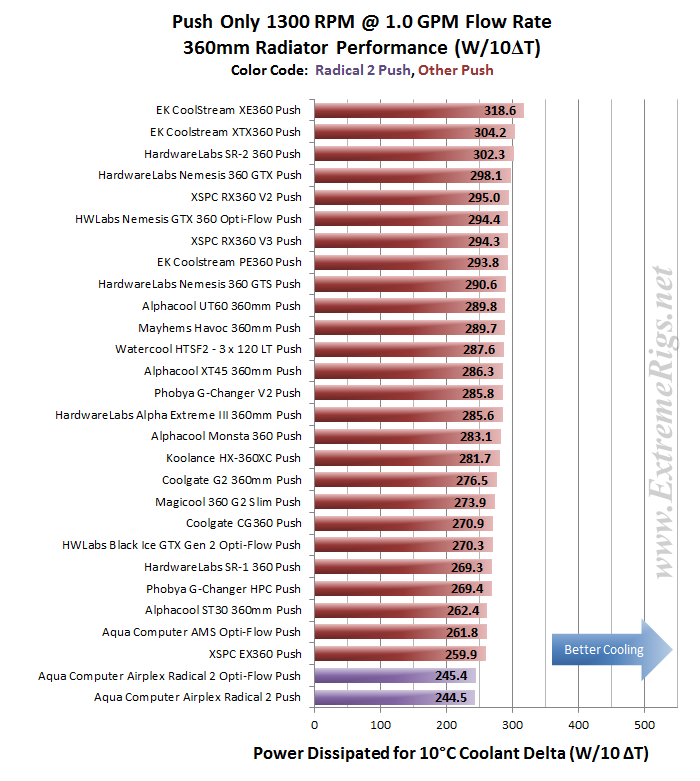
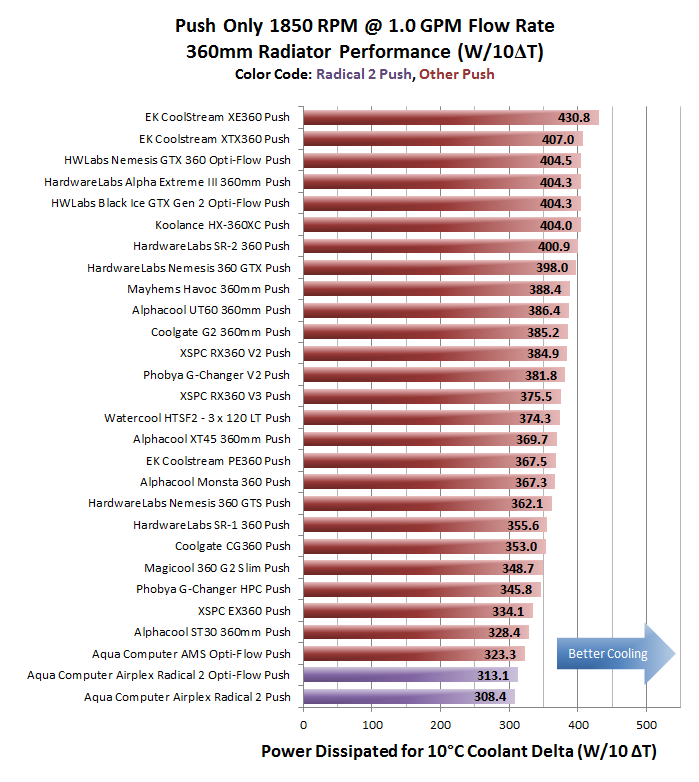
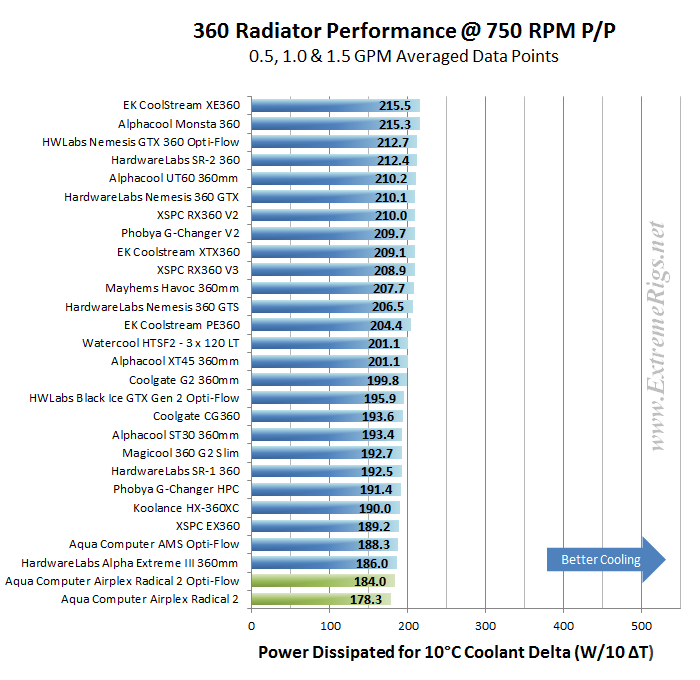
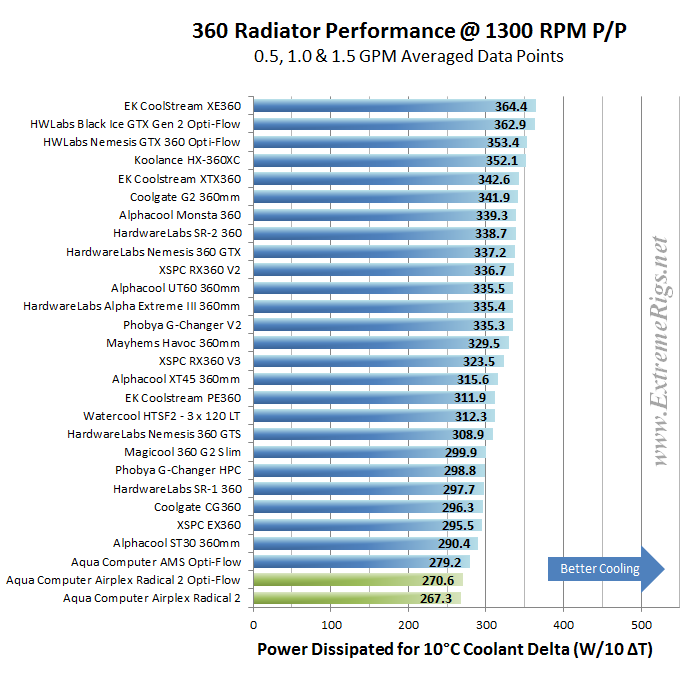
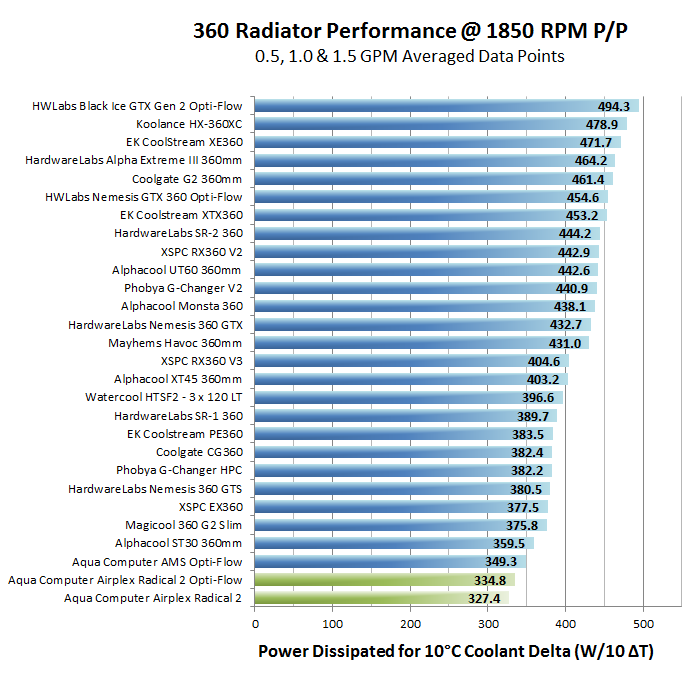
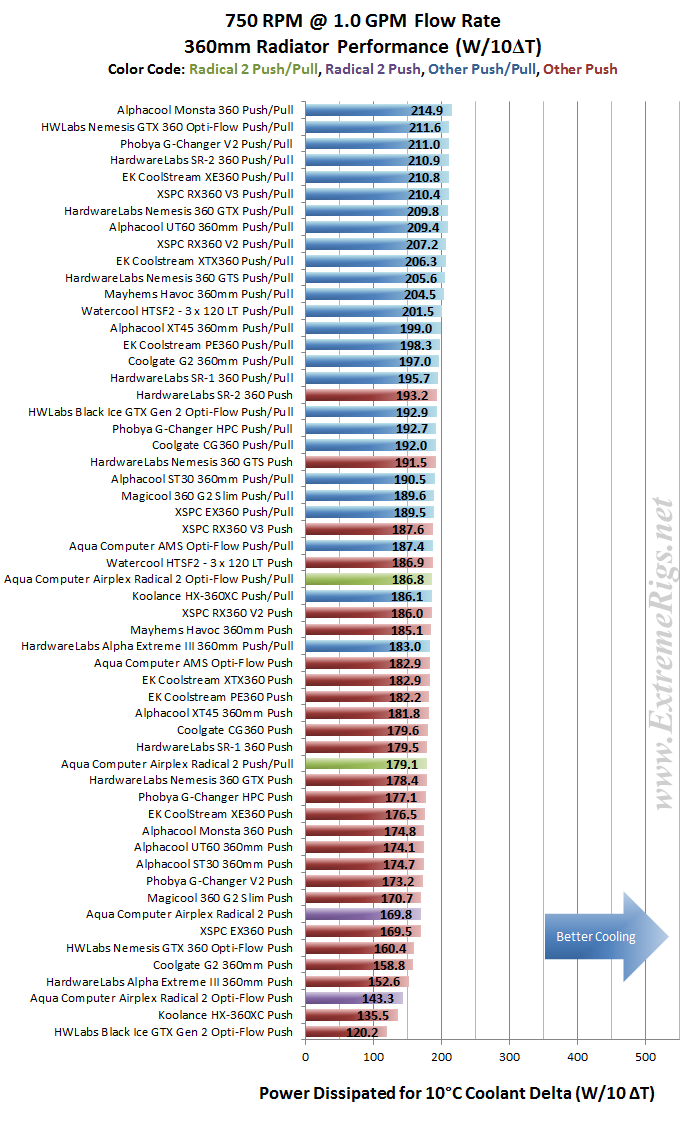
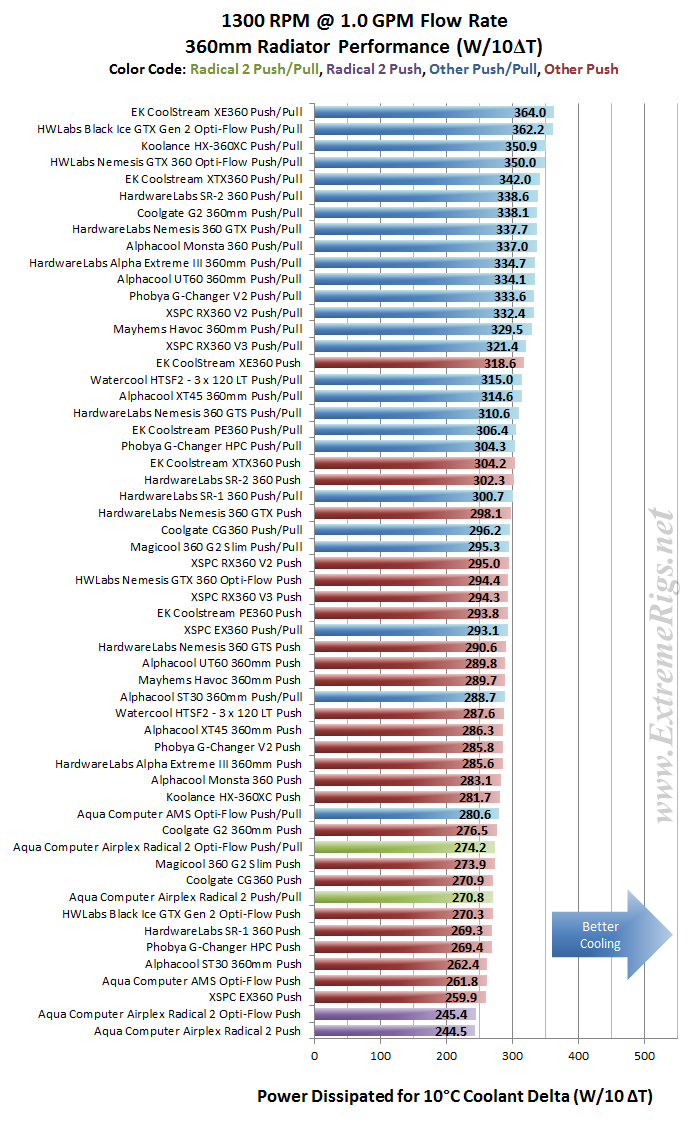
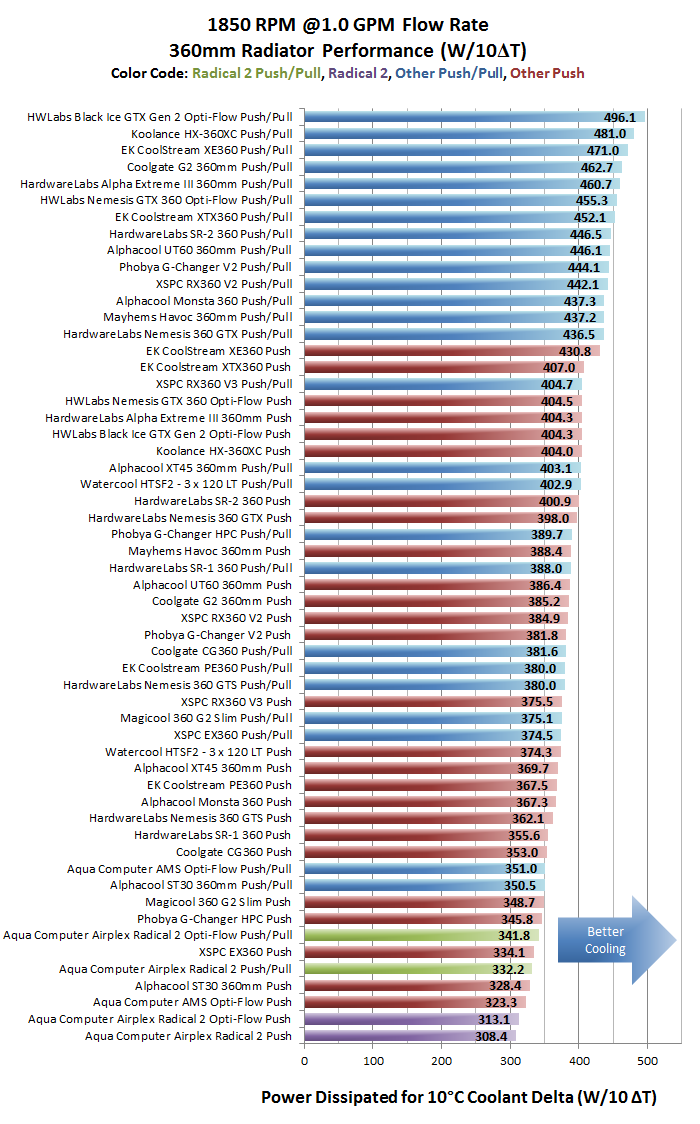

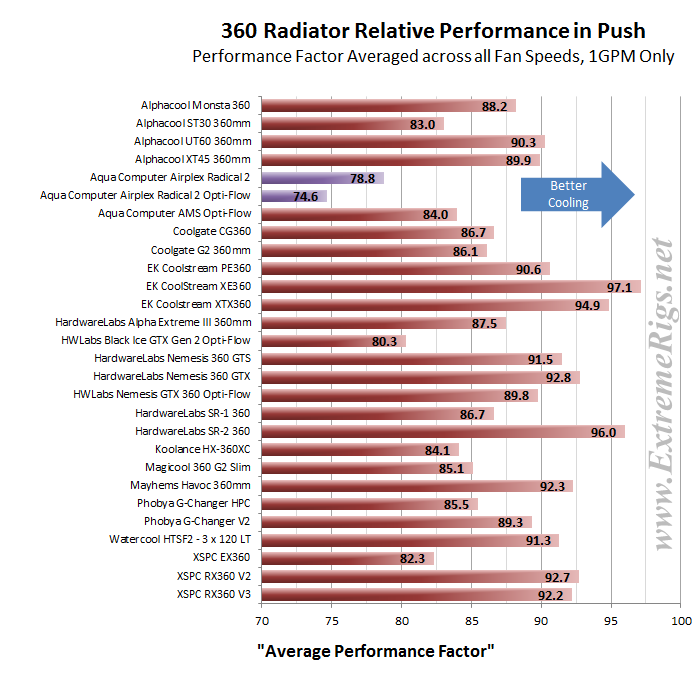
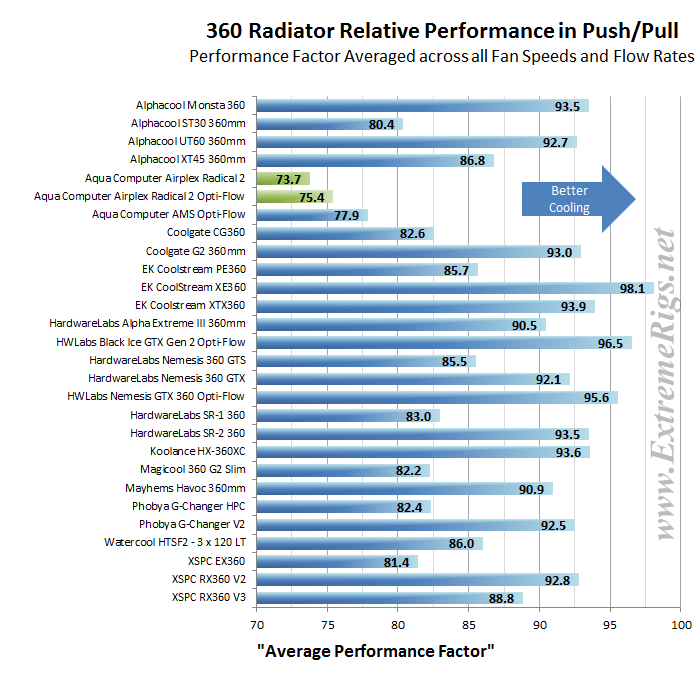
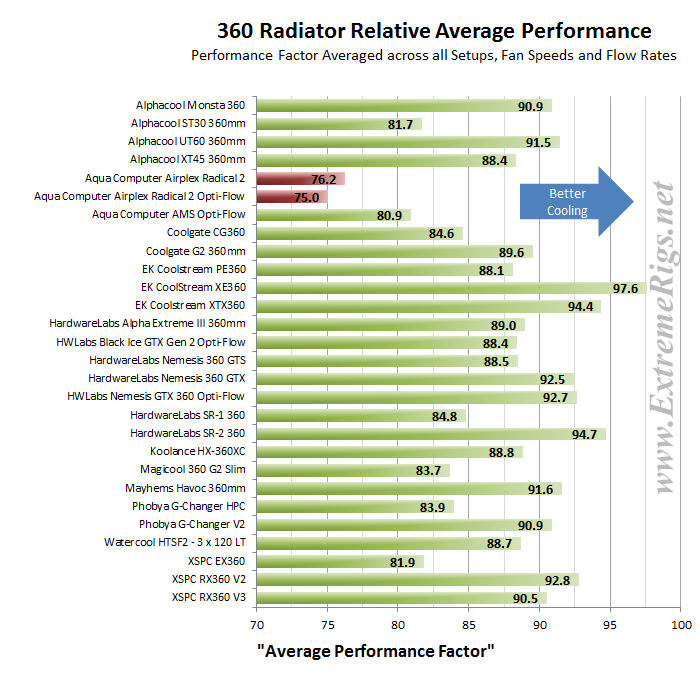
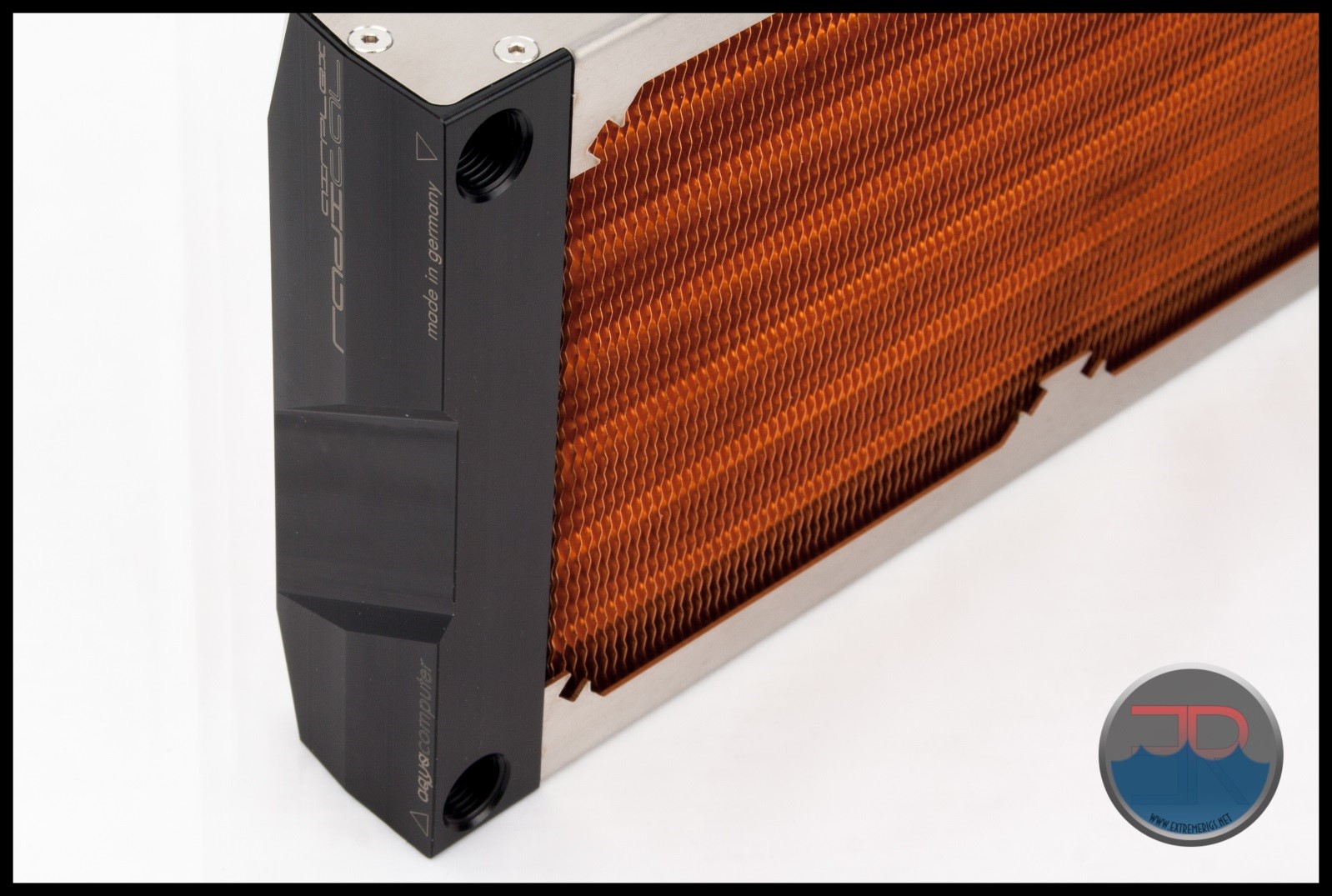



[…] 360 Radiator Alphacool ST30 360 Radiator Alphacool UT60 360 Radiator Alphacool XT45 360 Radiator AquaComputer Airplex Radical Copper 360 Radiator AquaComputer AMS 360 Radiator Coolgate CG 360 Radiator Coolgate G2 360 Radiator EK SE 360 Radiator […]
[…] just cannot dissipate the same amount of heat from the coolant as the other radiators. Quelle: Aqua Computer Airplex Radical 2 Copper Radiator Review – Page 5 of 6 – ExtremeRigs.net -> radikal schlecht Zitat von known user wenn die Masse NV anprangert, krieg ich […]
[…] […]
I have to say i fully agree with you on the mounting solution – it is utterly terrible. It took me and my brother working together to get this to fit in the top of my case (admittedly, it was a tight squeeze which doesn’t help). The fact that it doesn’t come with a full set of the fittings, means mine is supported by 4 on the top, and the other 8 holding fans on the bottom of the rad.
That aside, the cooling performance of this rad seems to be excellent for me – i have a d5 vario pump (usually running at 1000rpm), fx-8350 with EK waterblock, and this rad (3 x corsair sp120 + 2 x 200mm NZXT case fans. My temperatures are on average, below ambient. While on load, they peak at 35C. When overclocked, i have struggled to get it to go higher than 43C. Although this review suggests that other rads would lower these temps further.
Comments are closed.